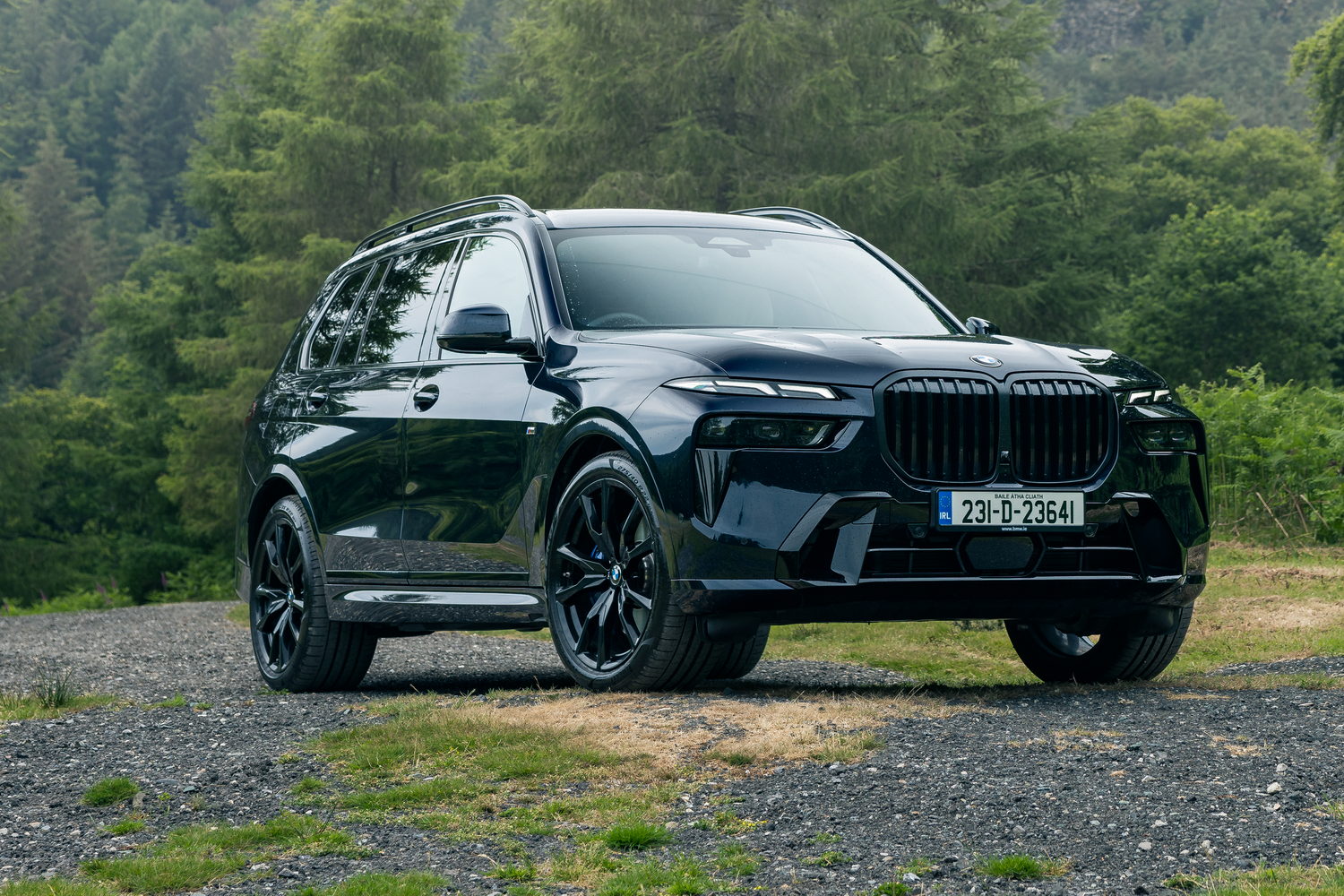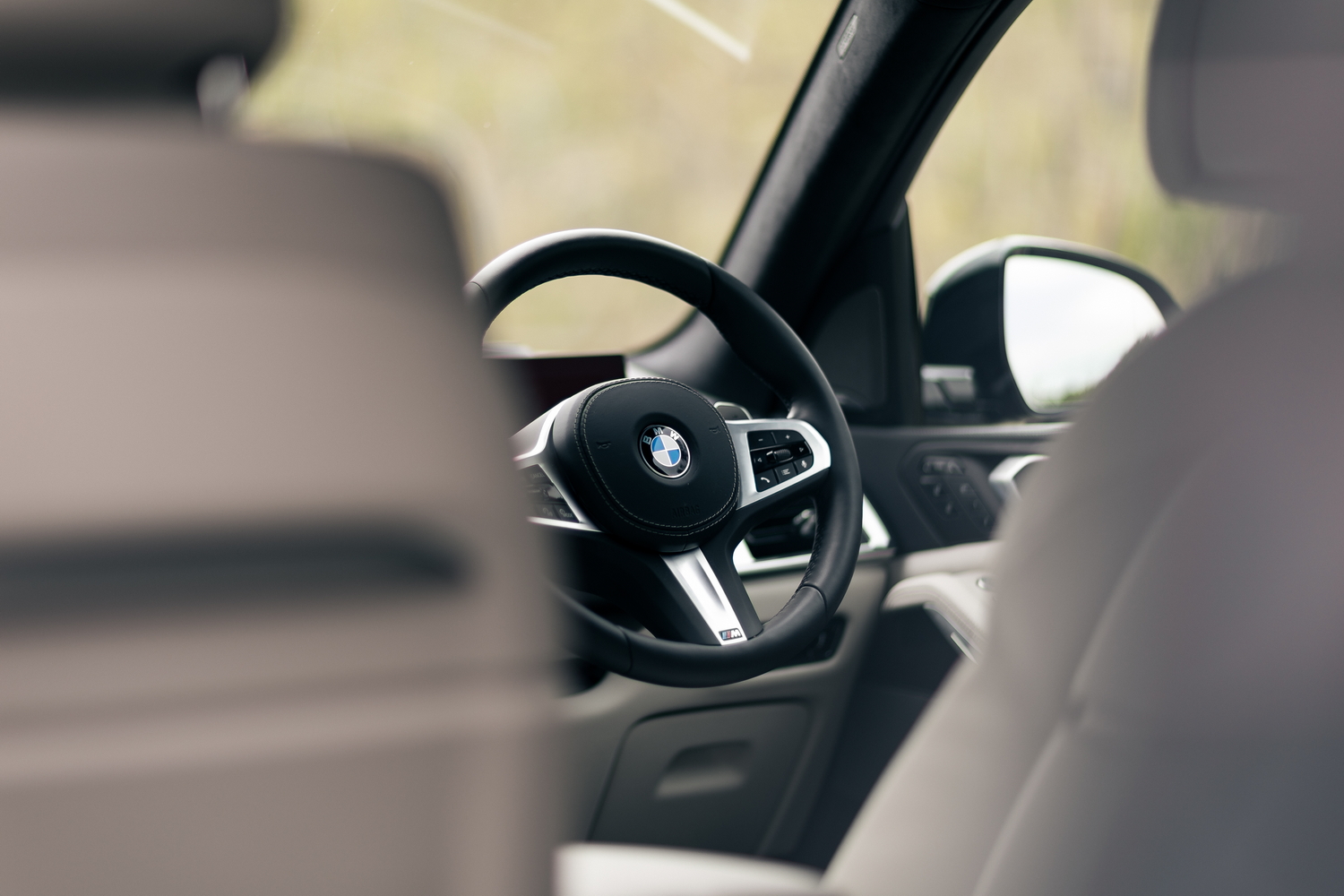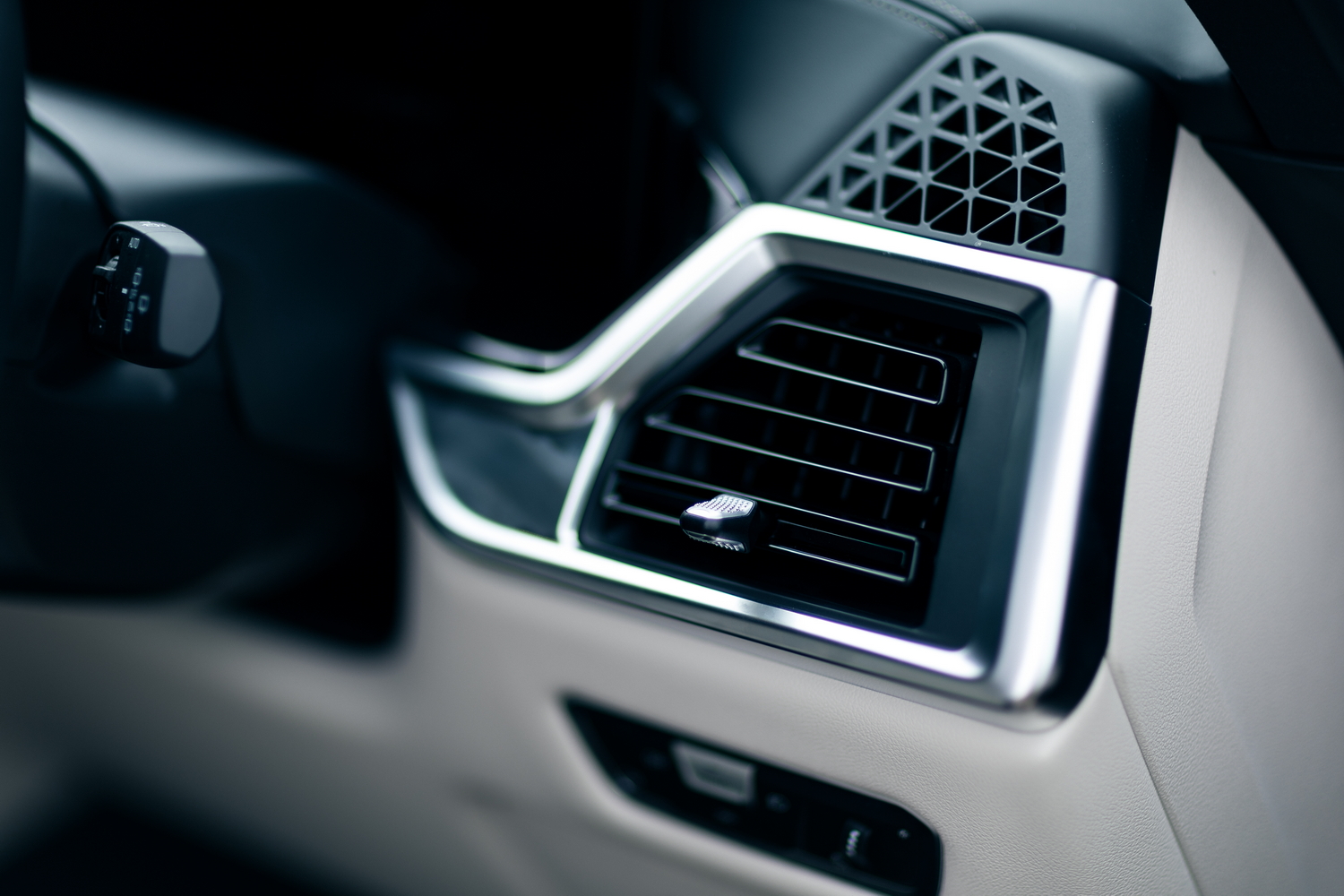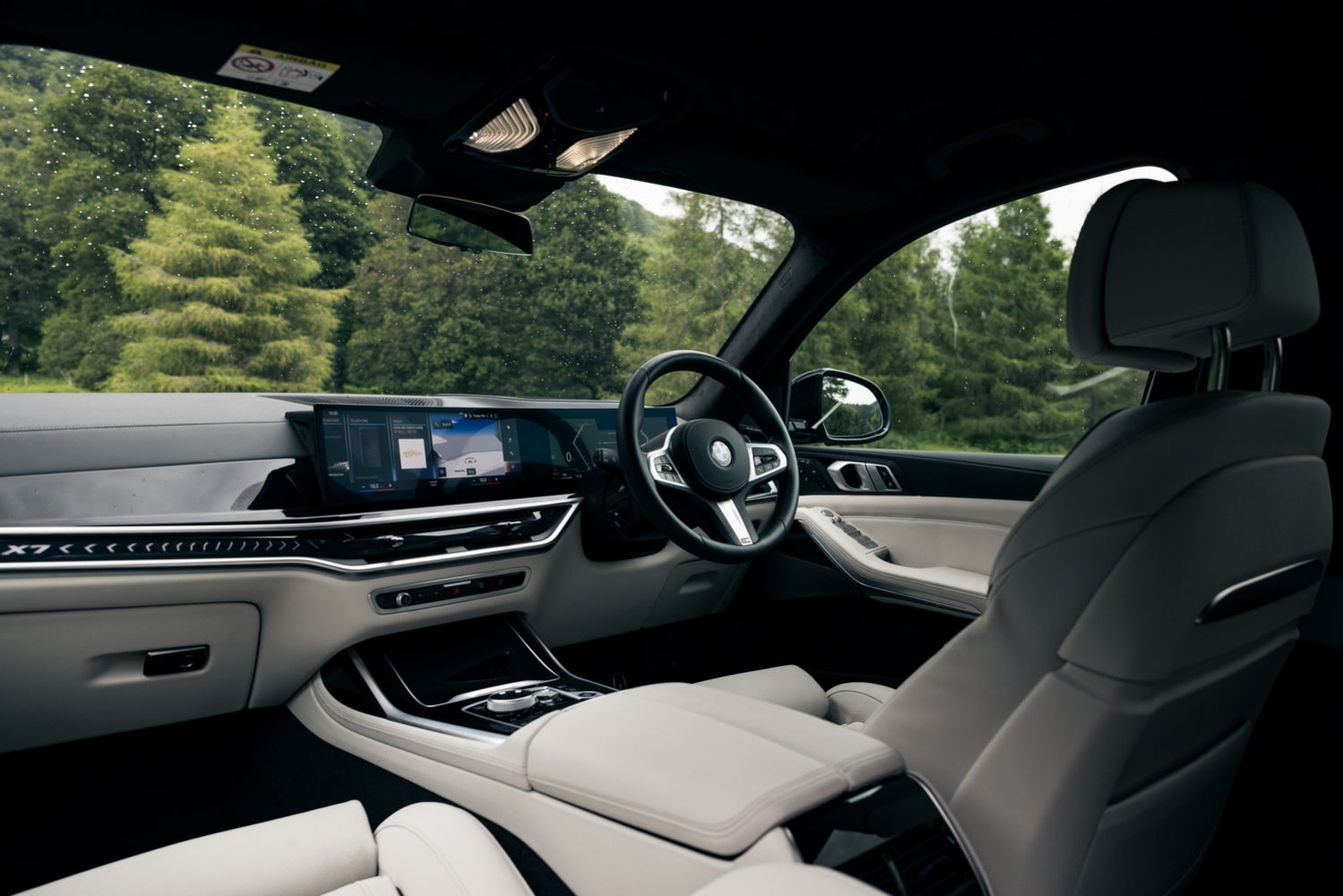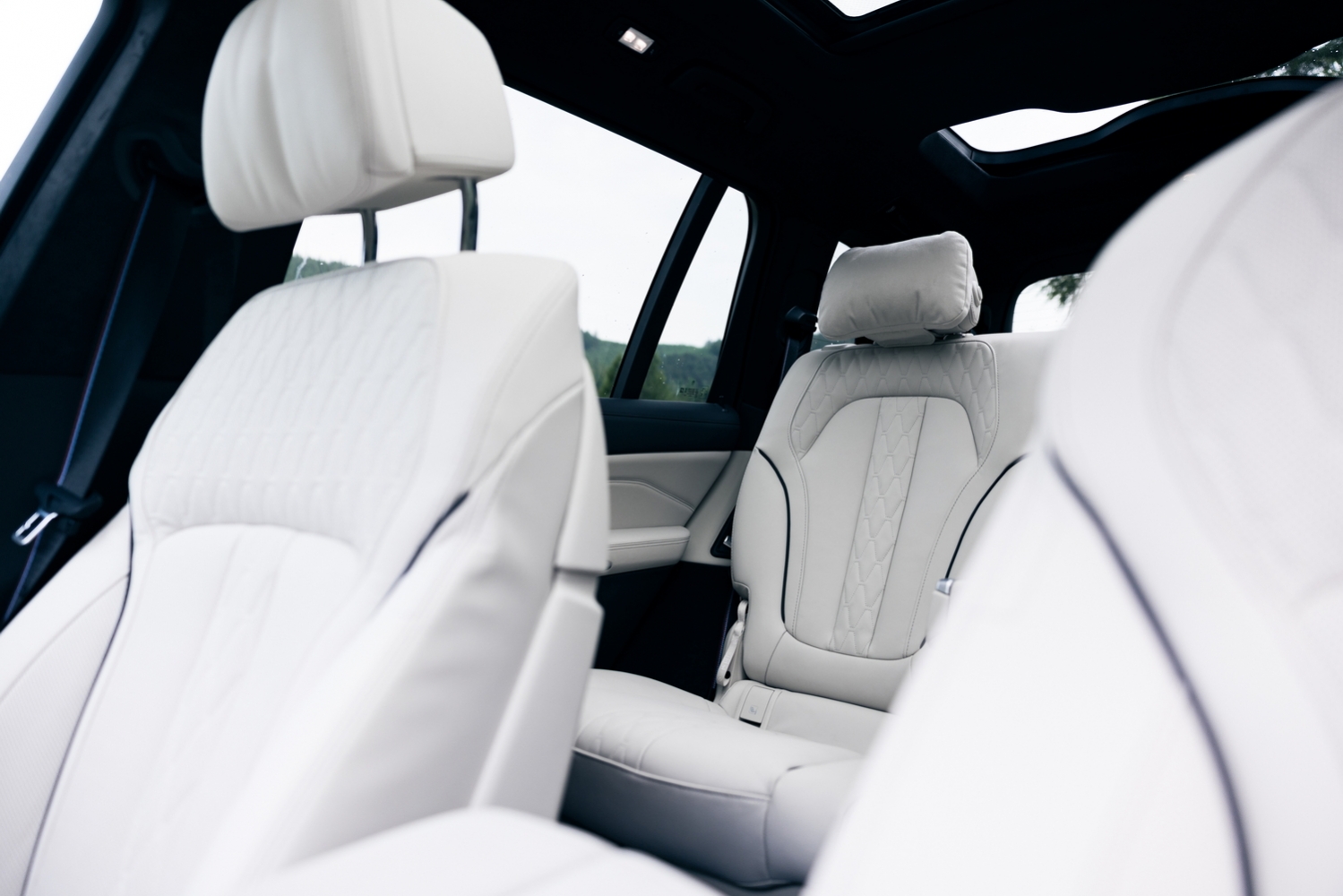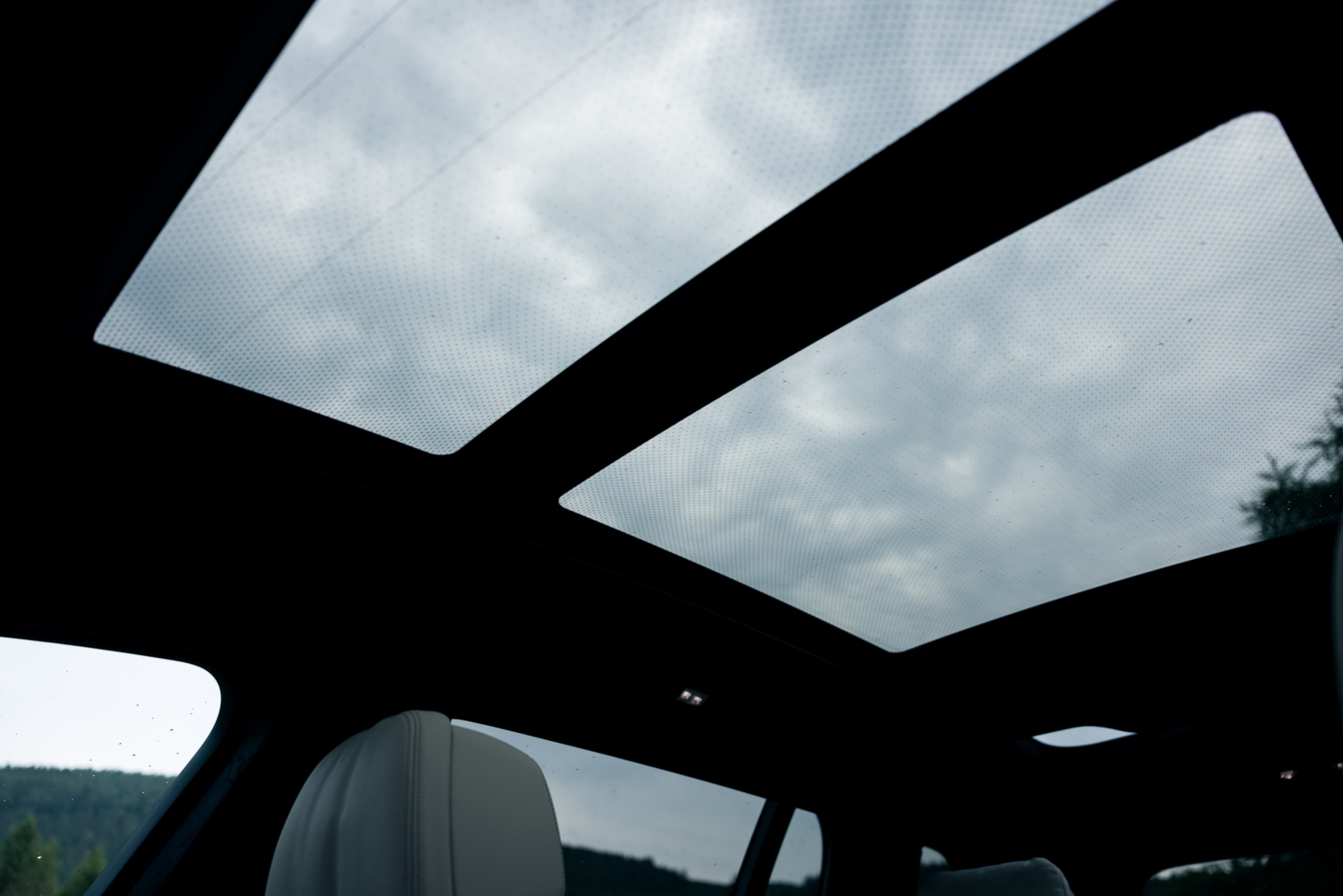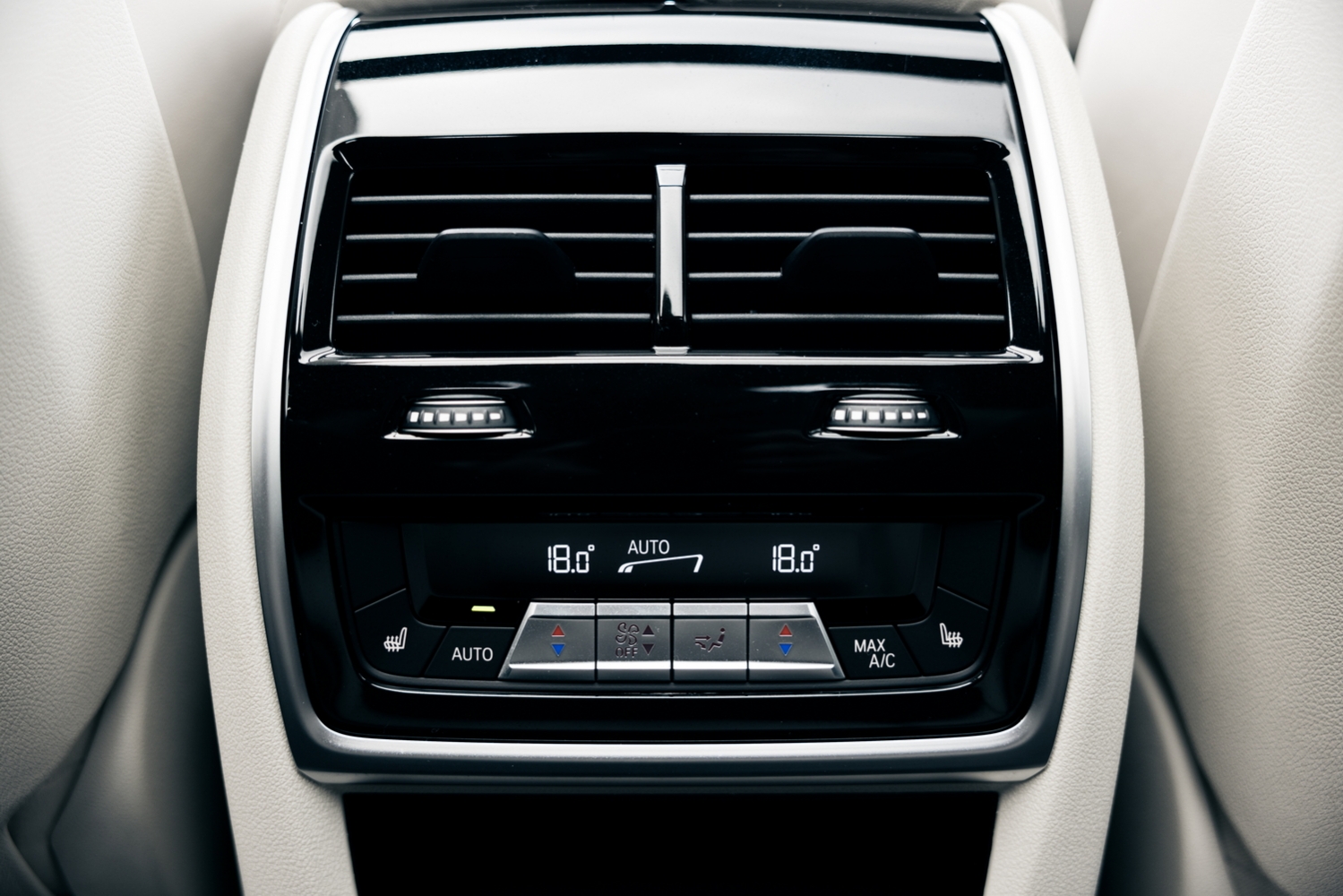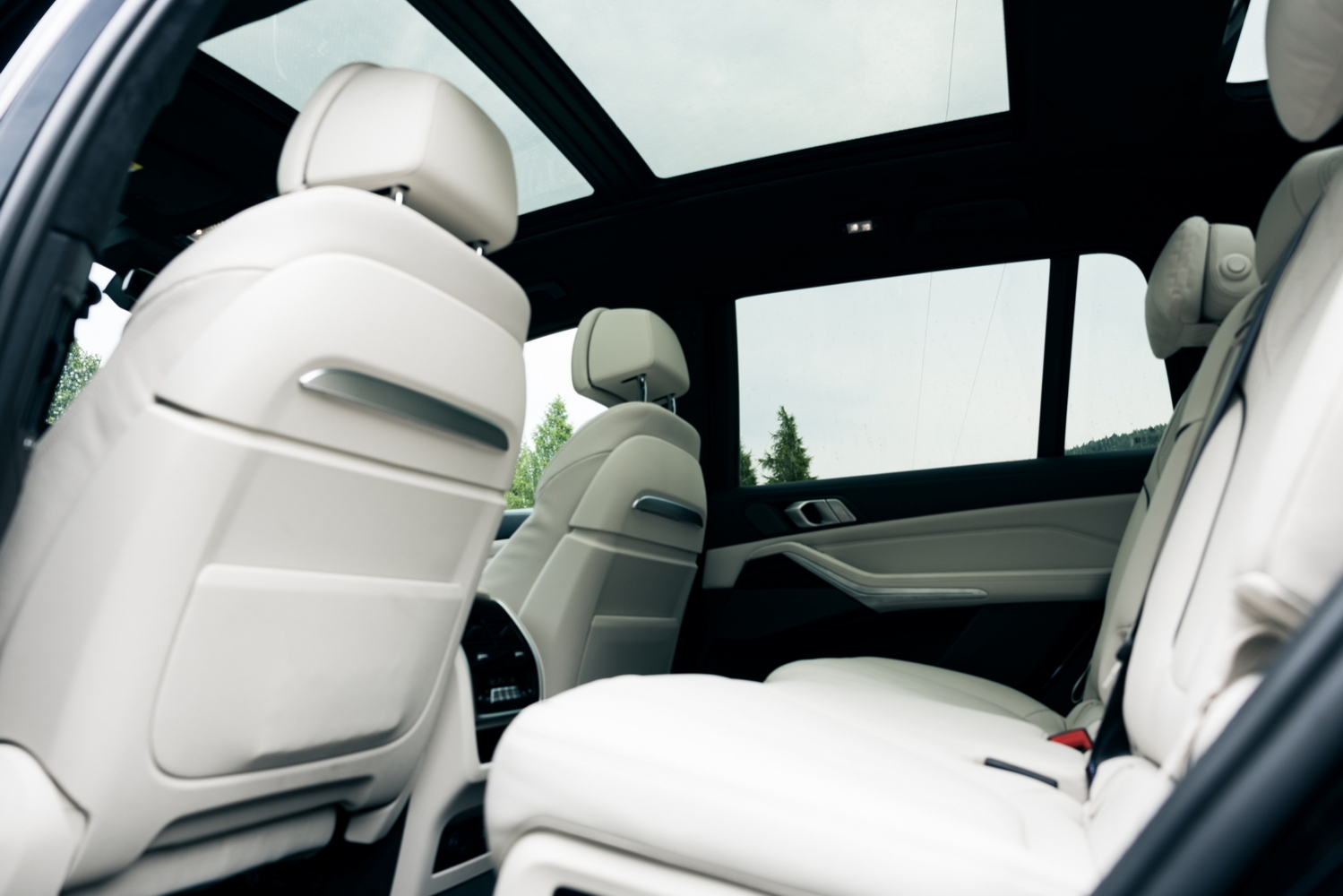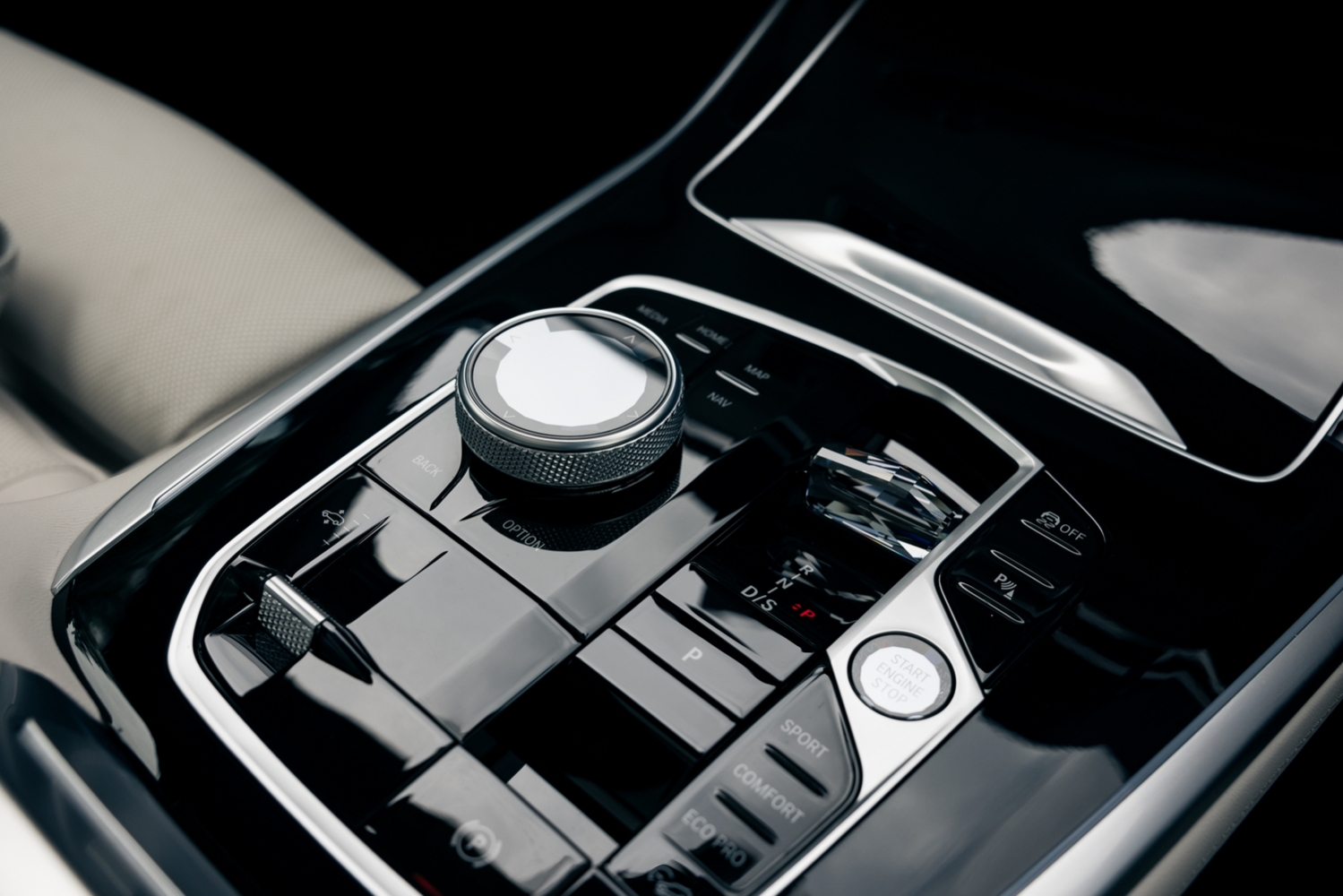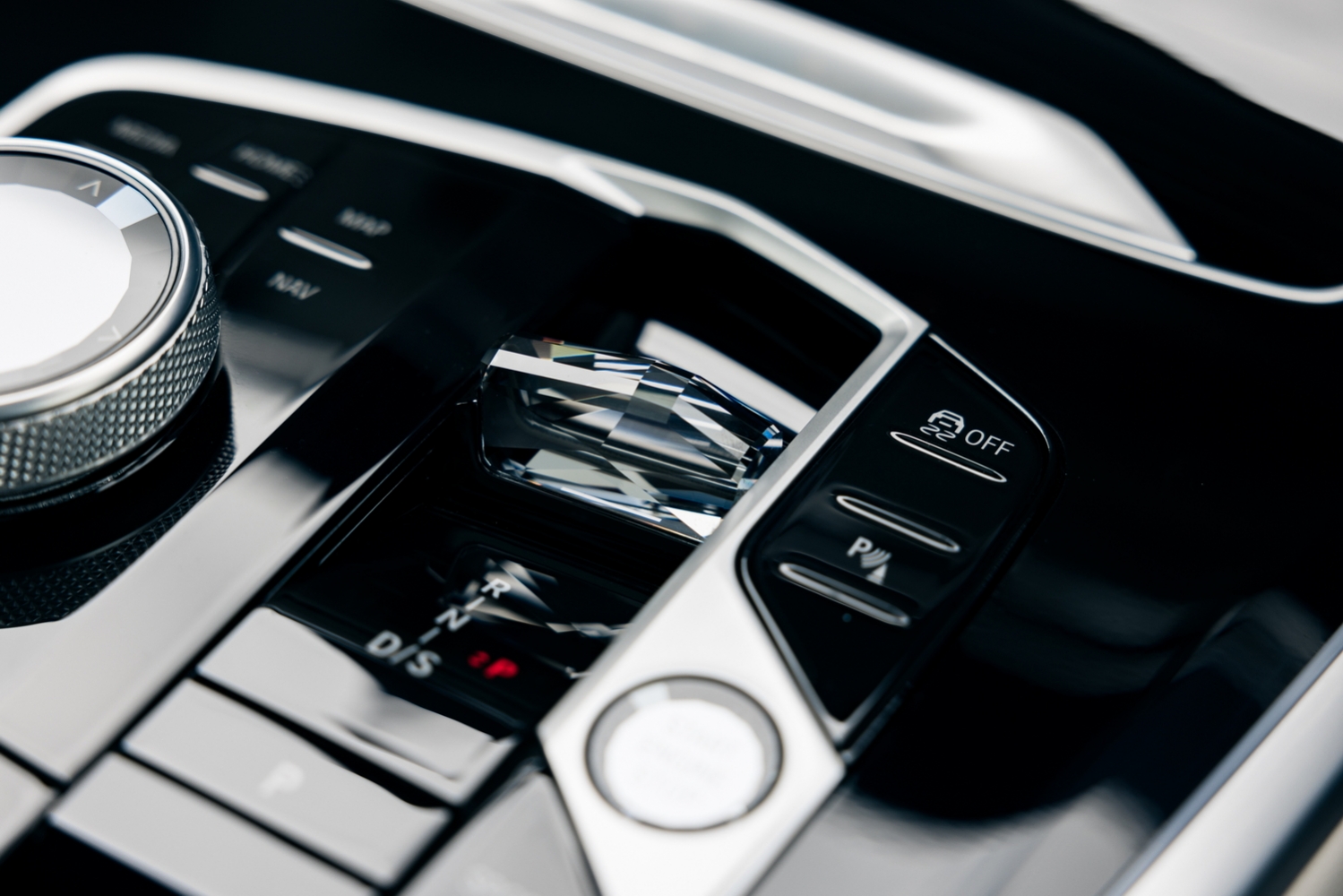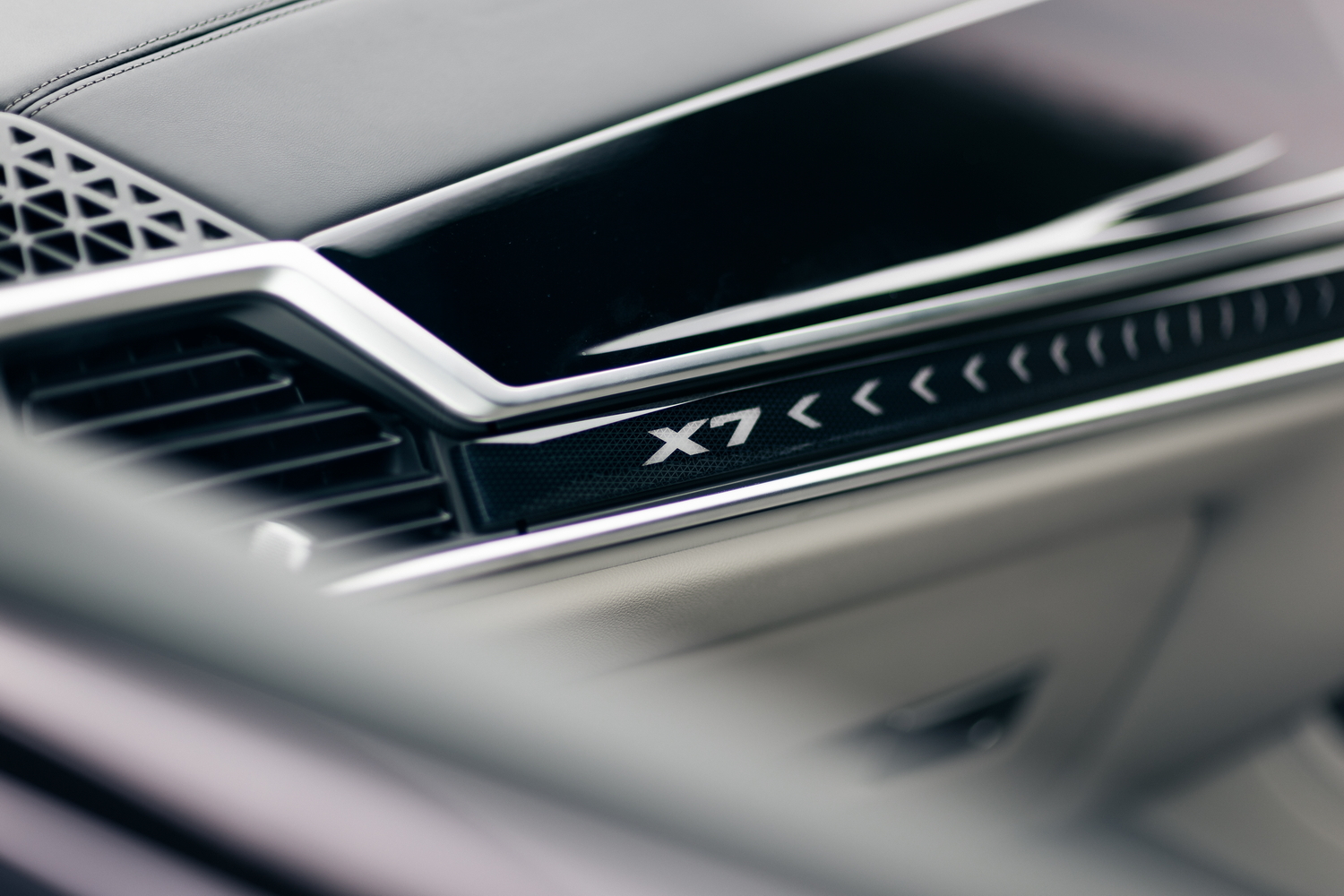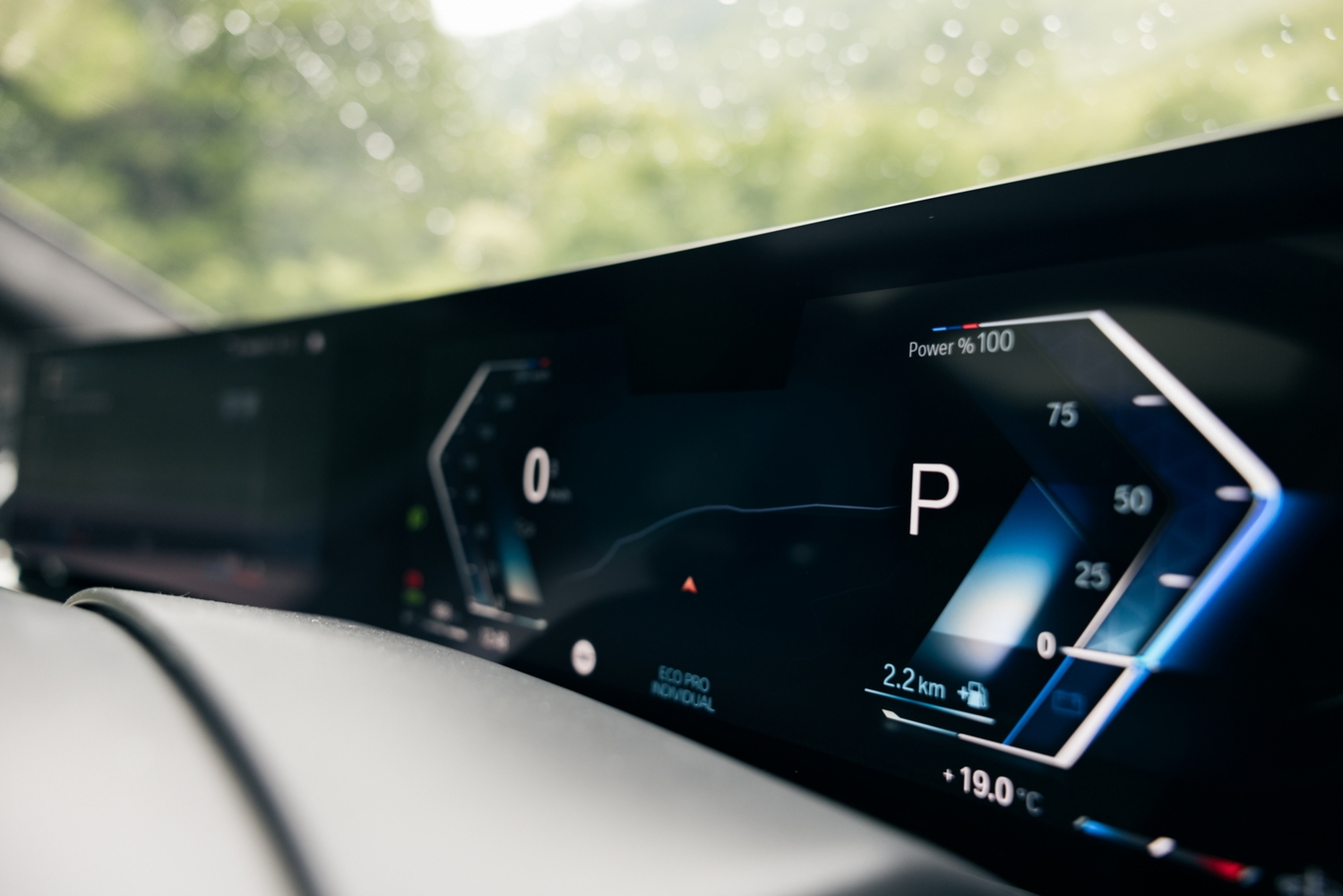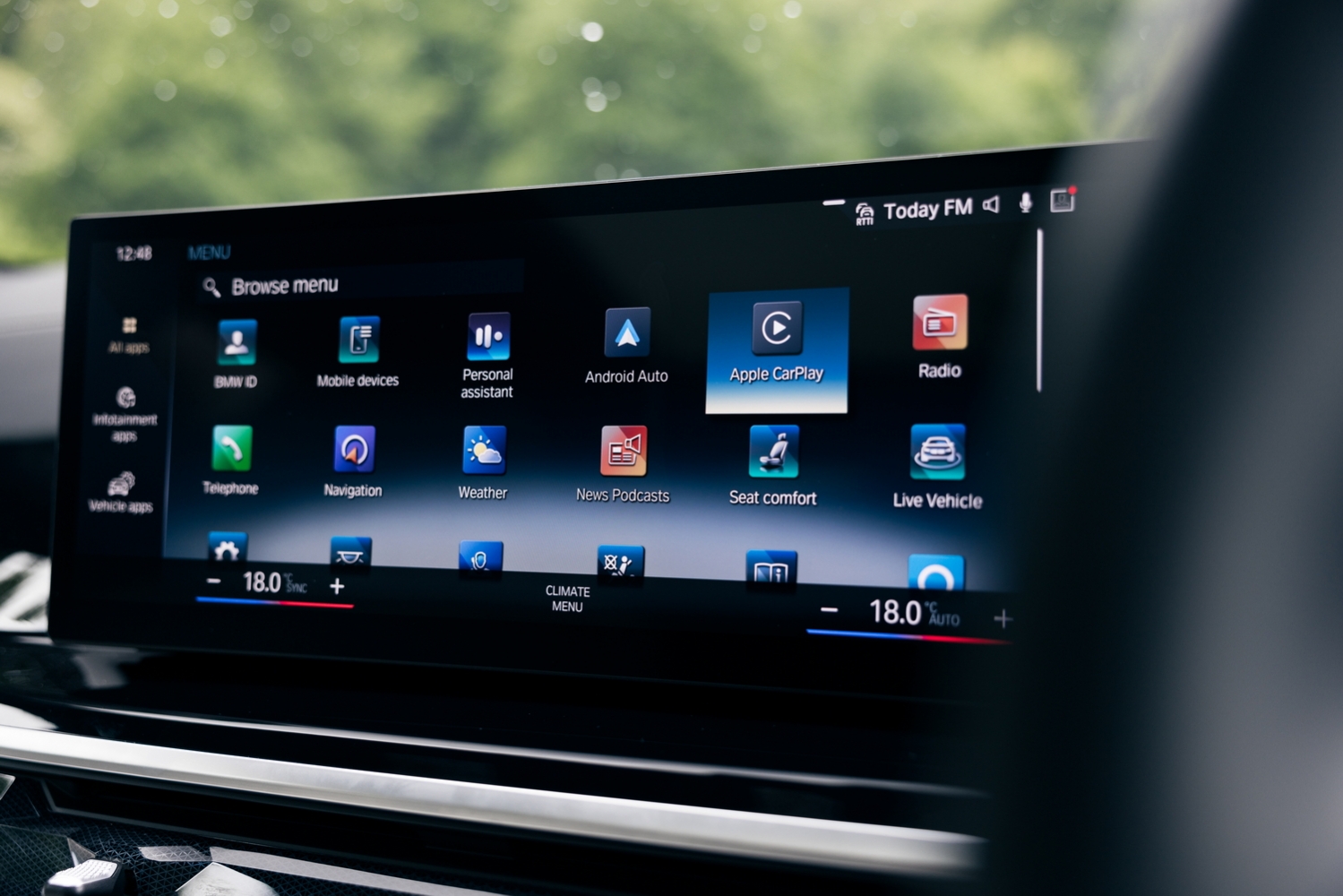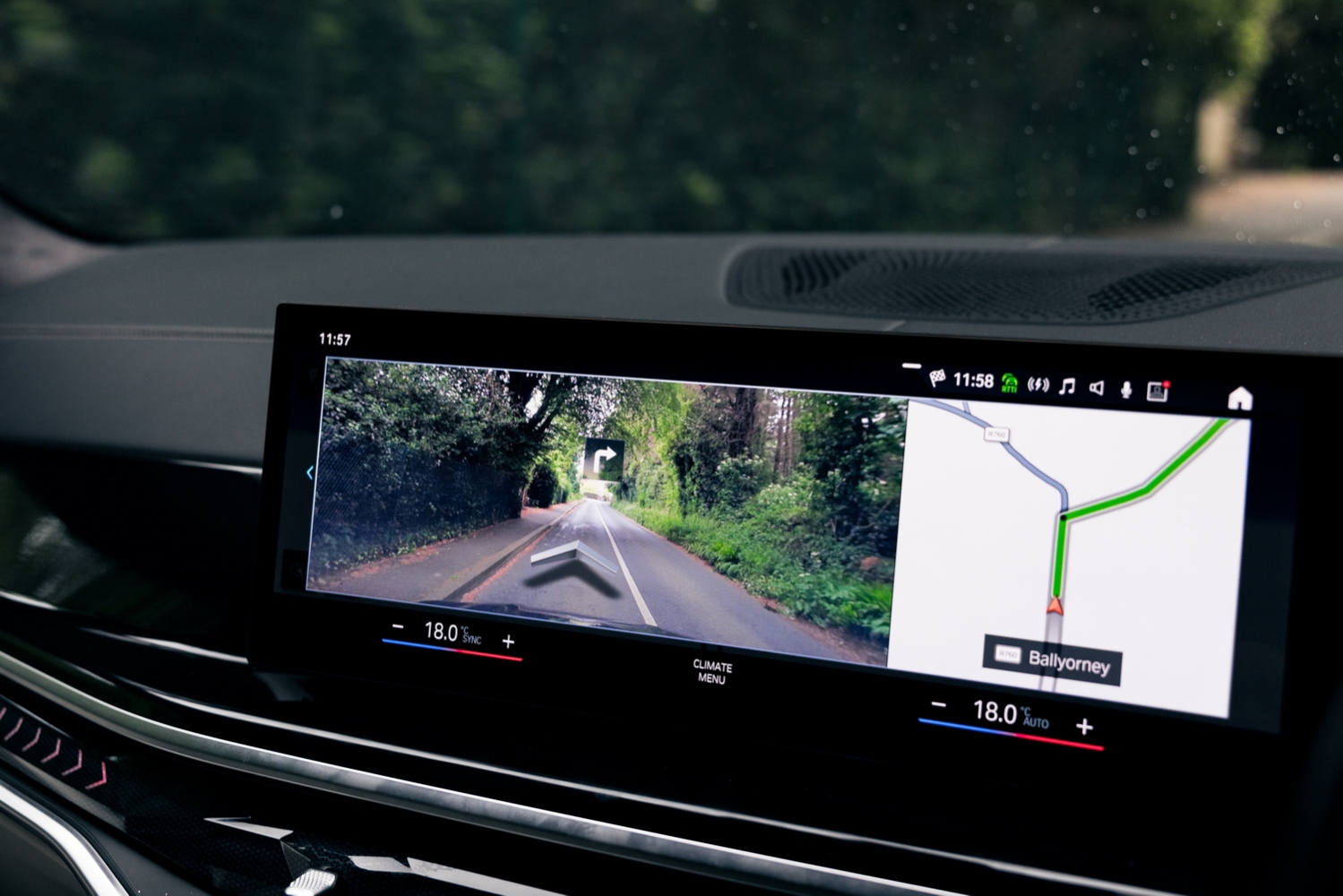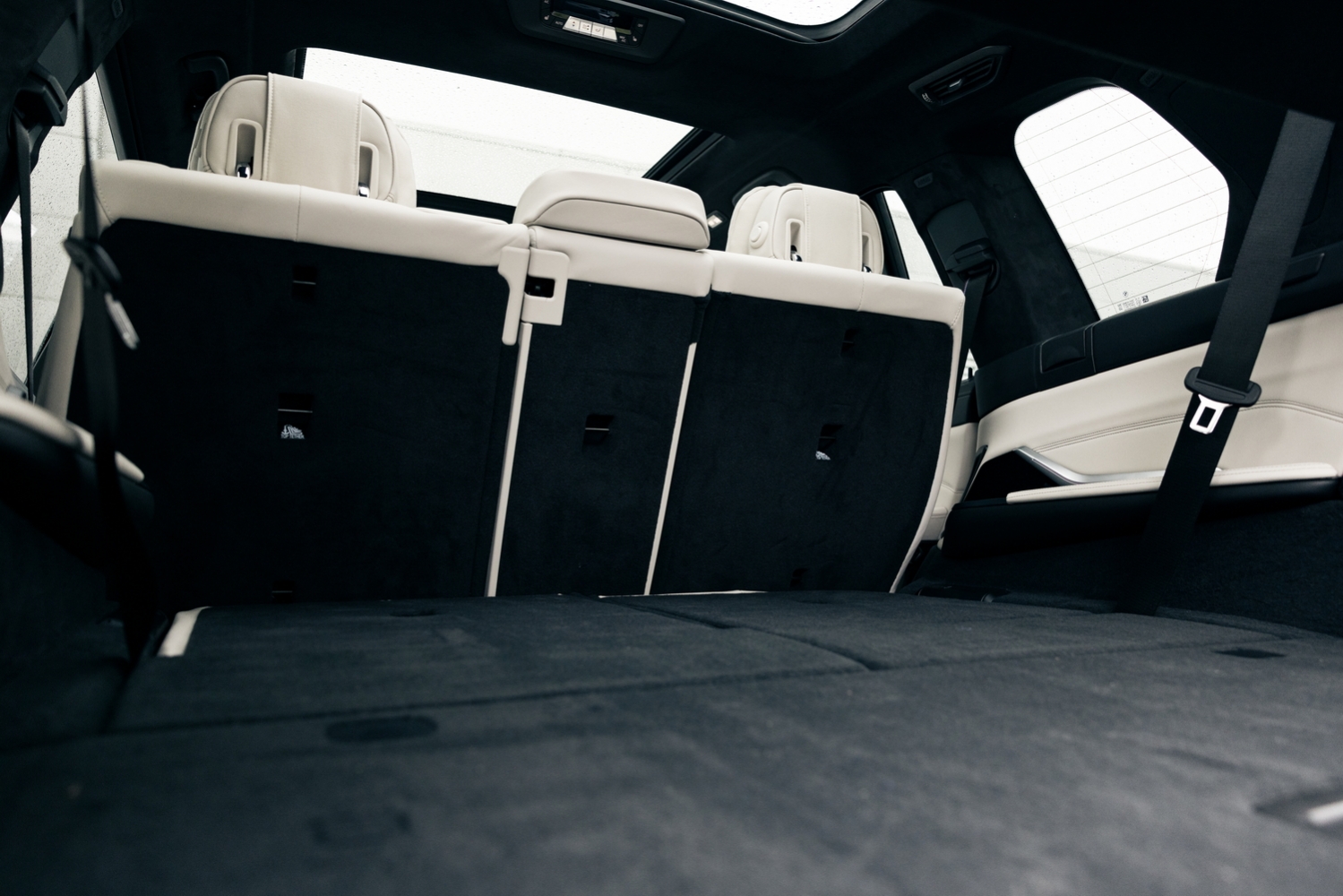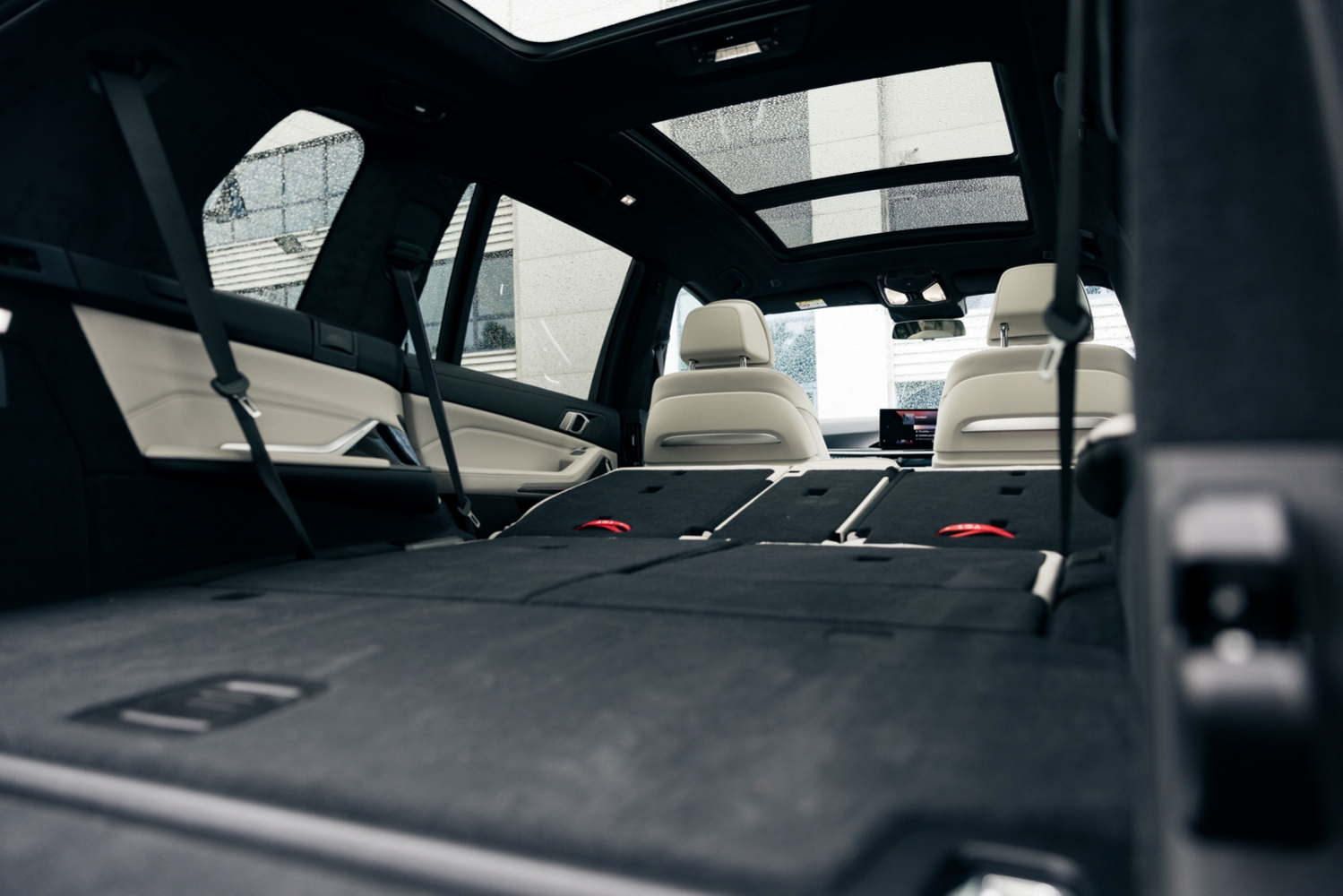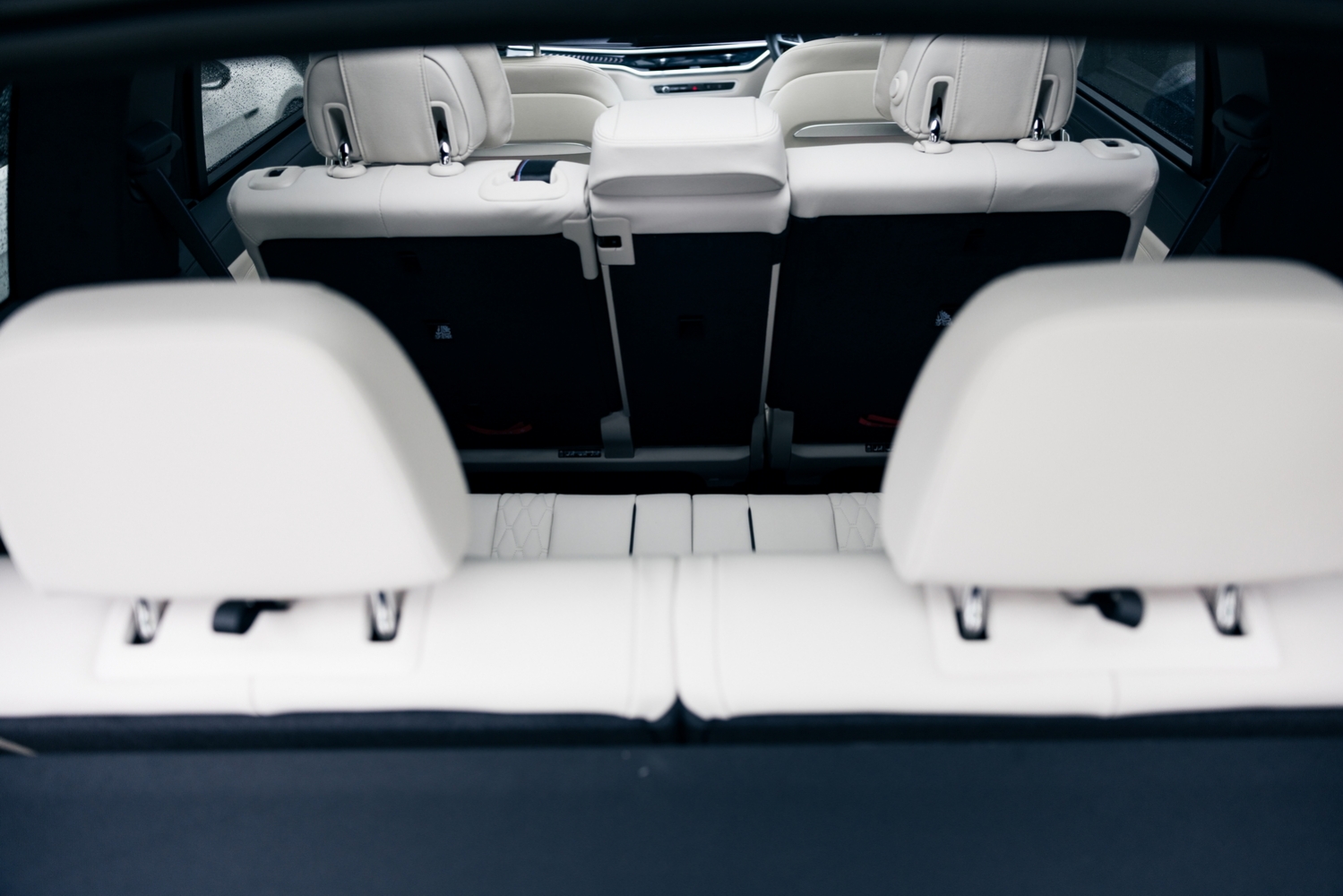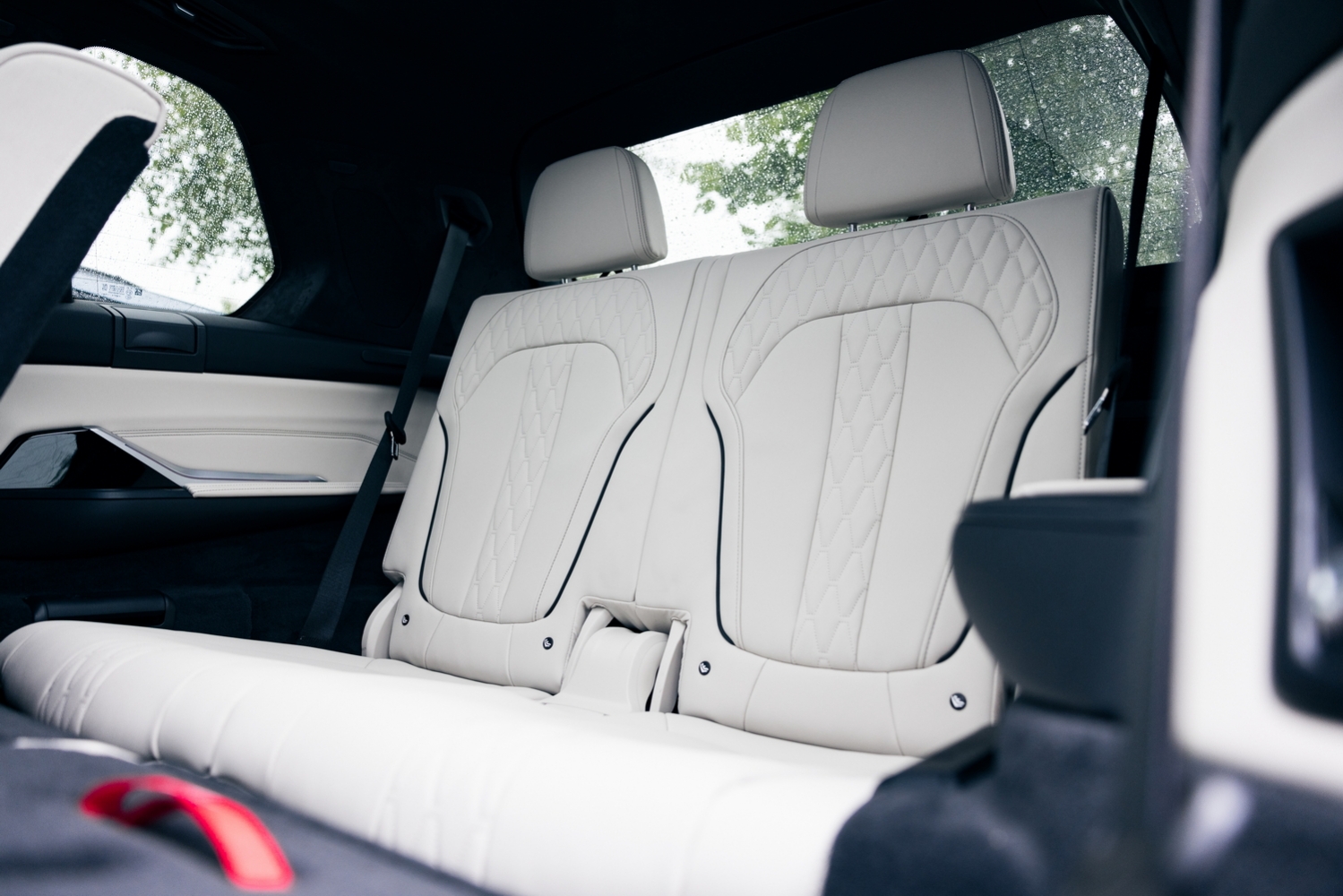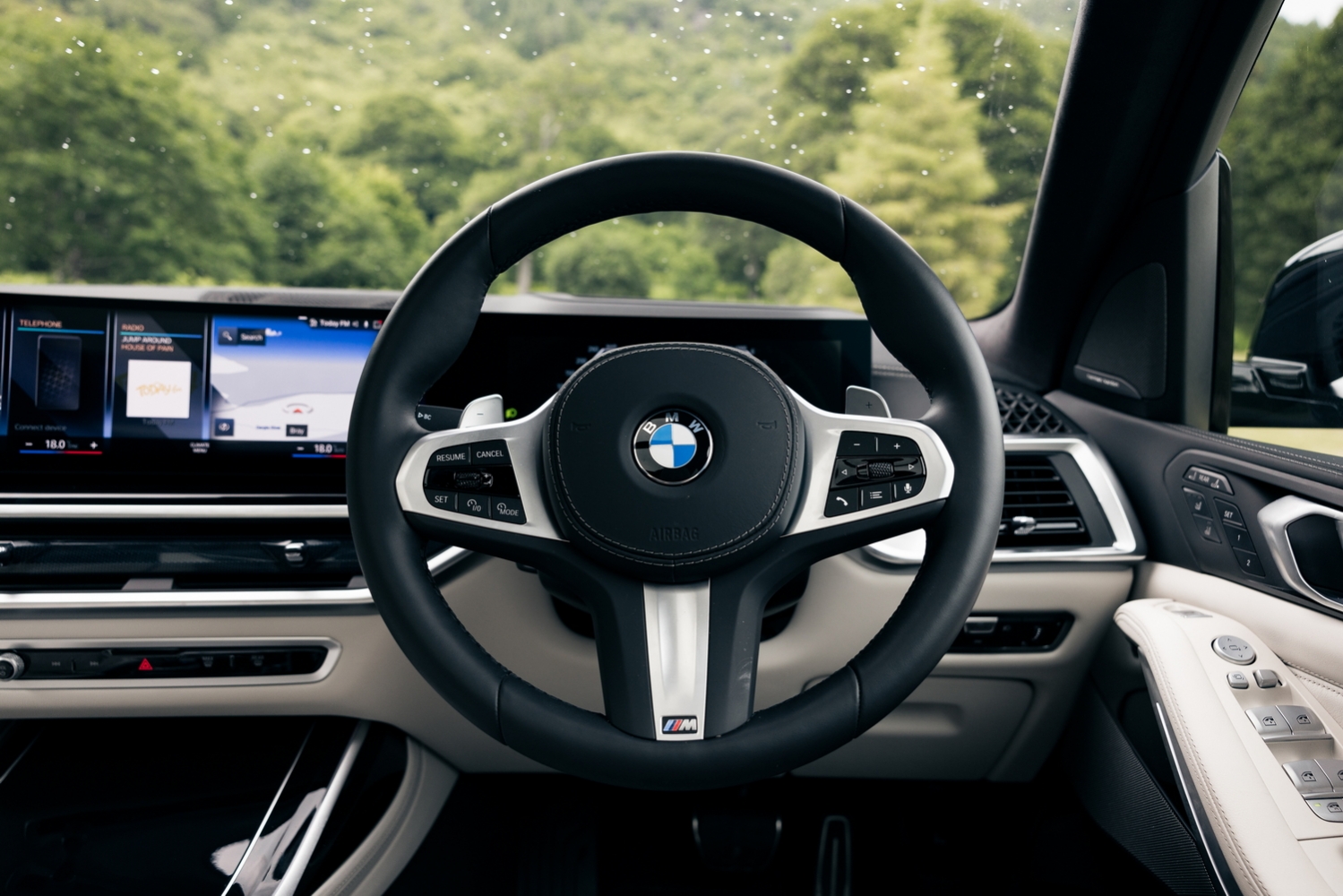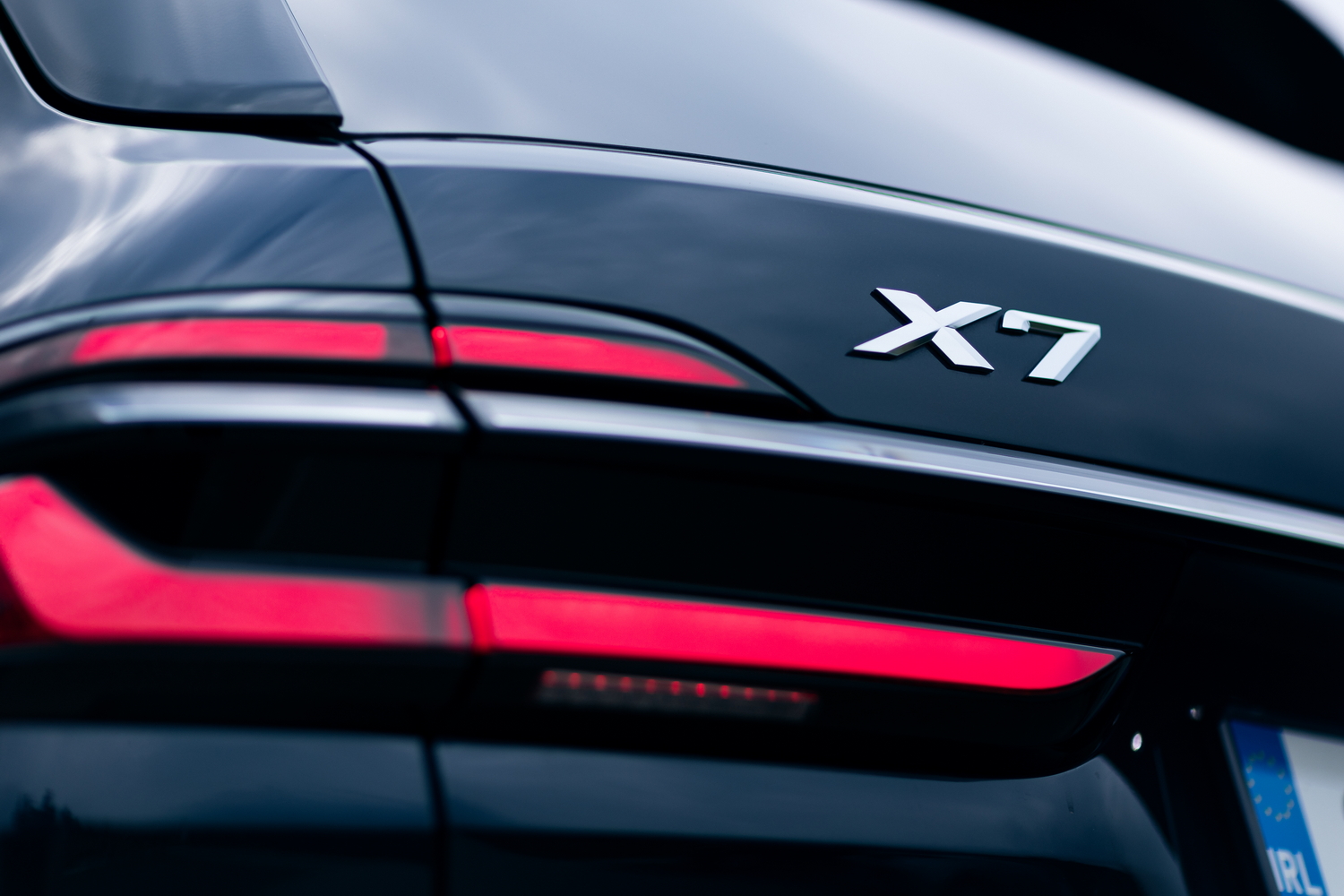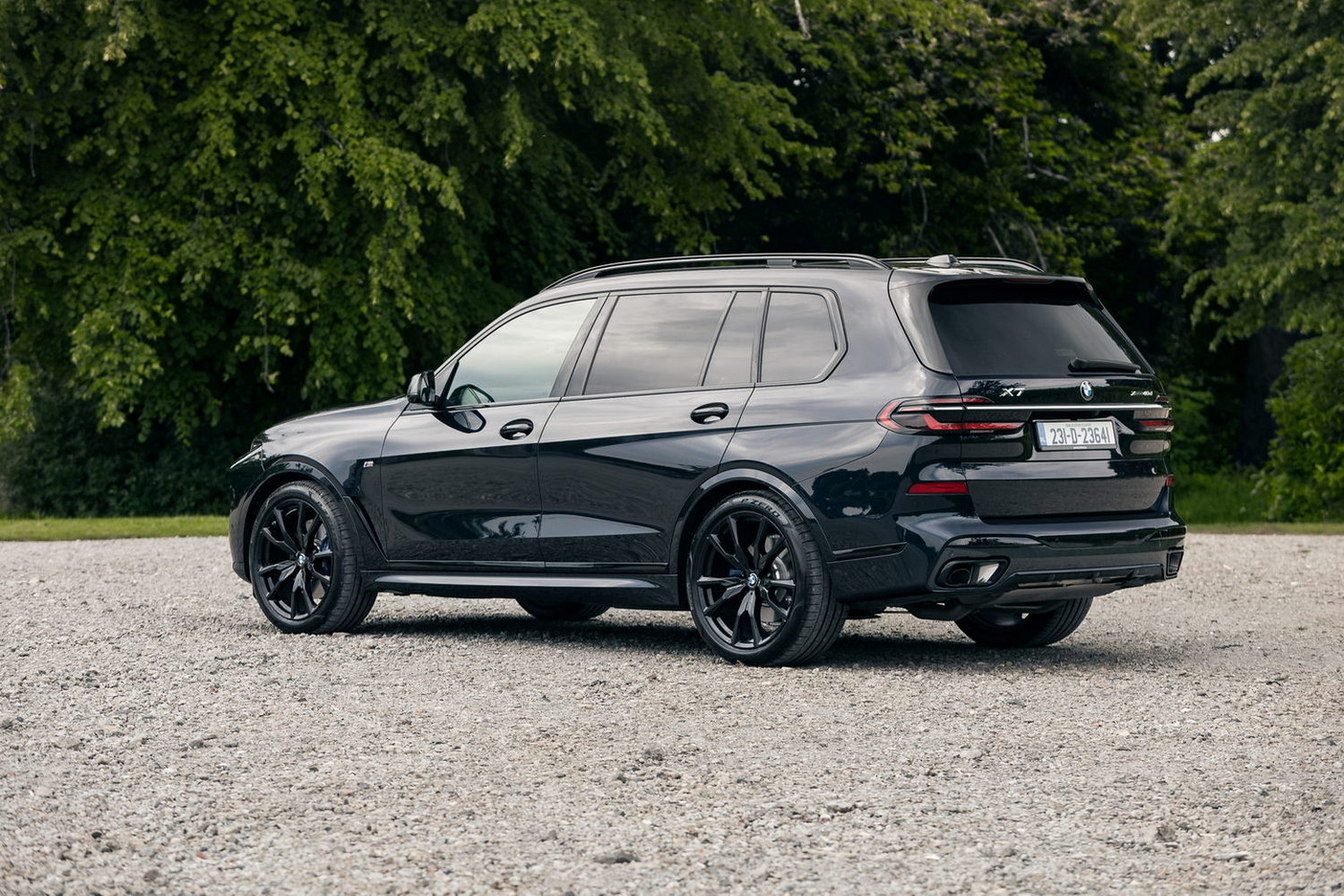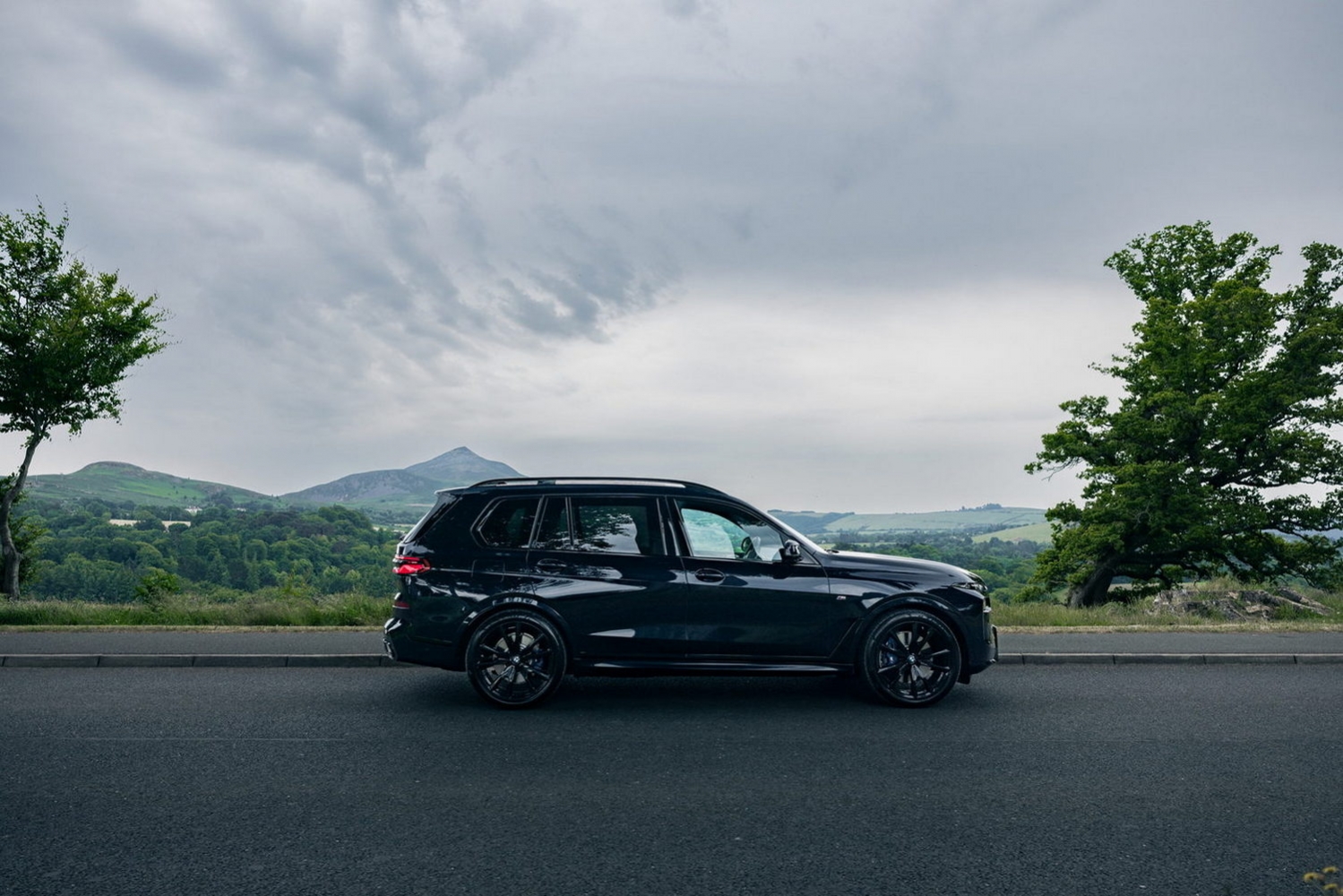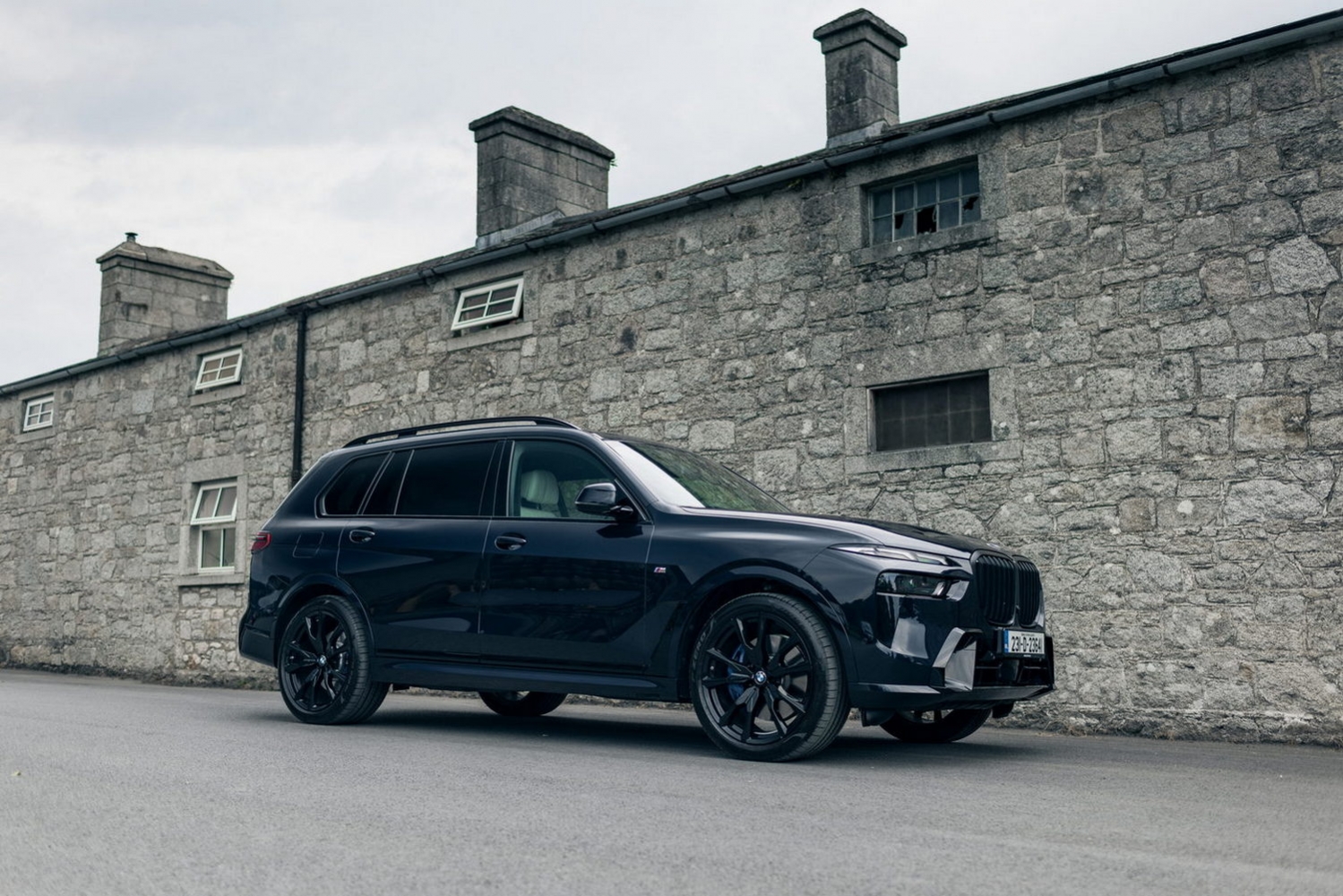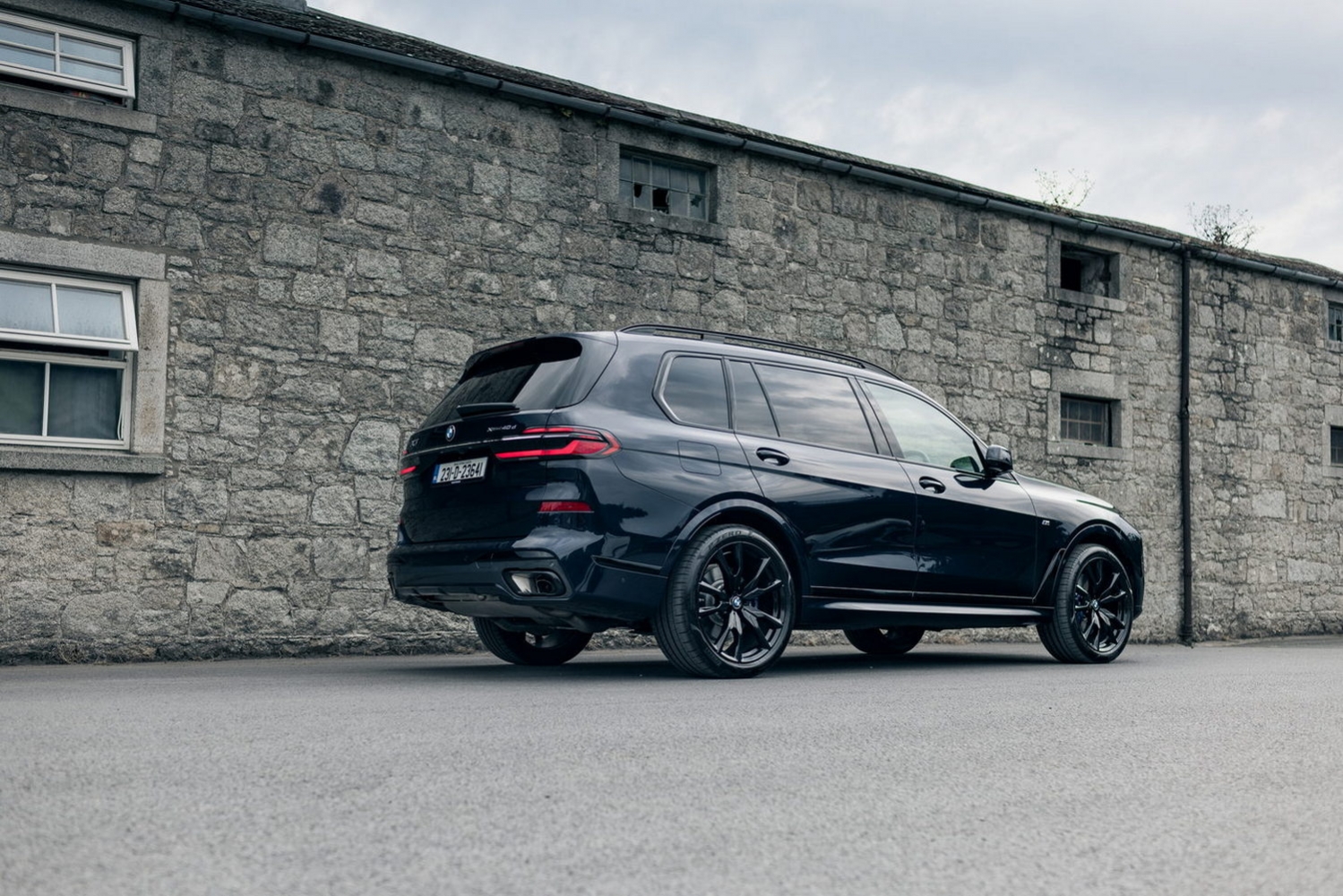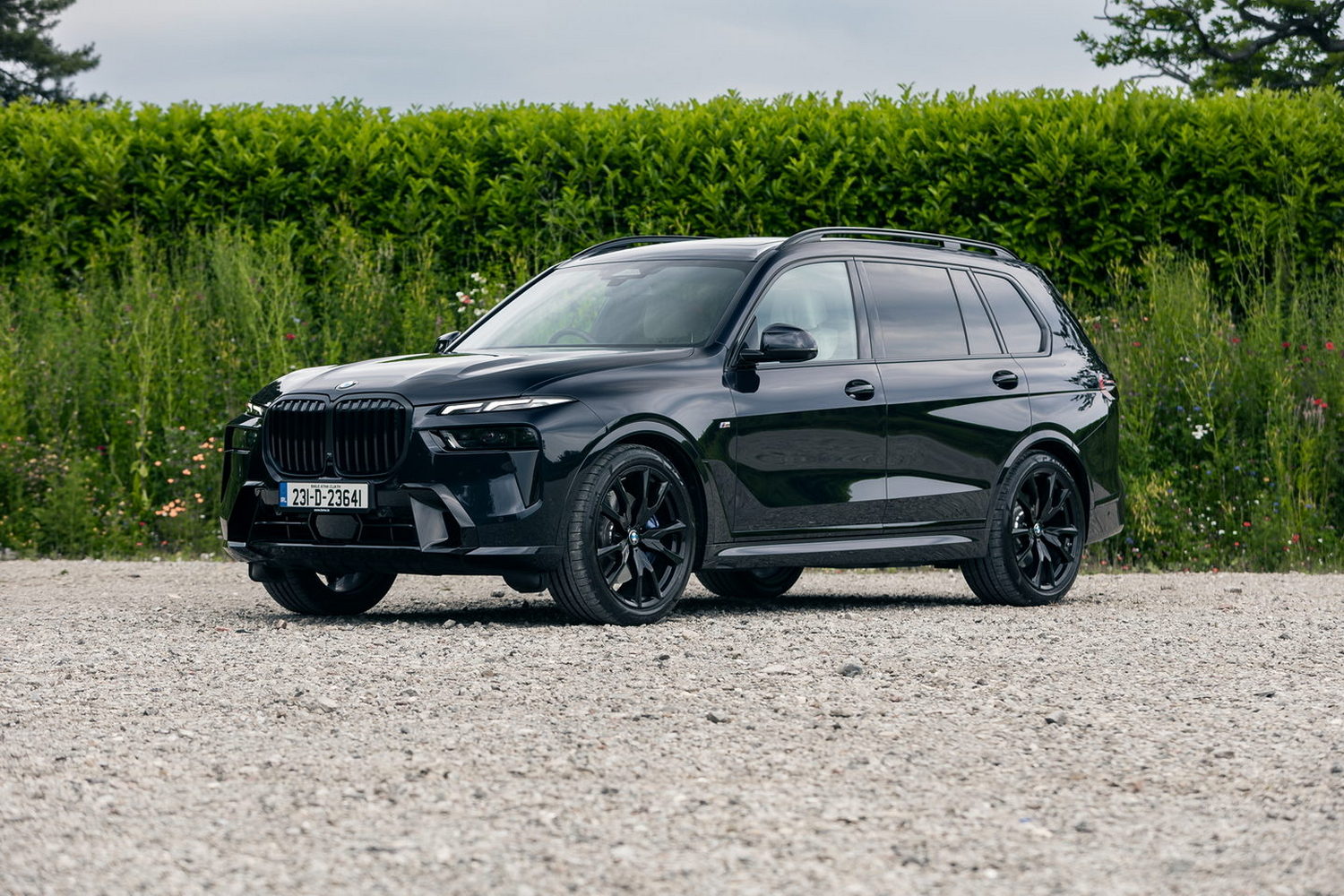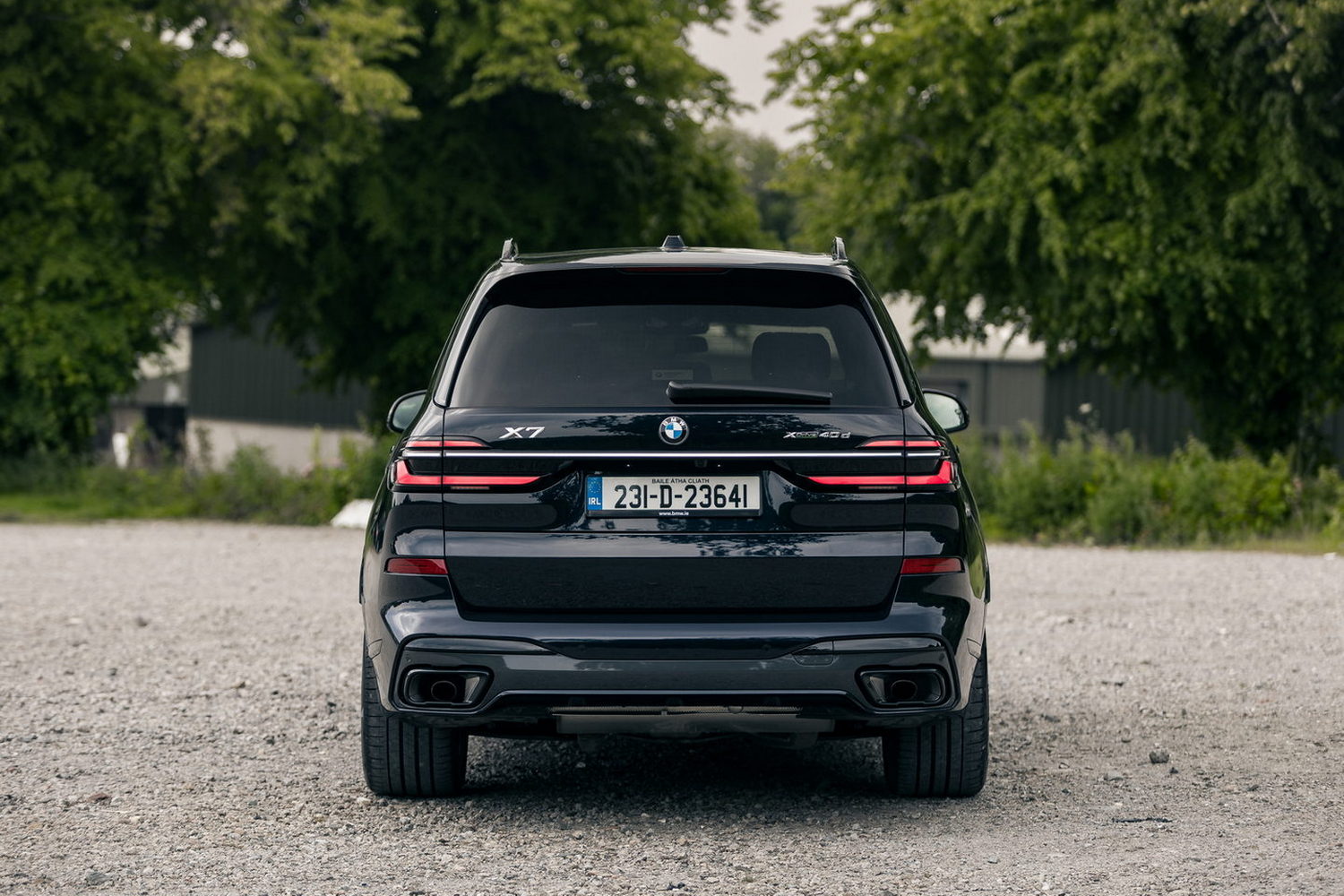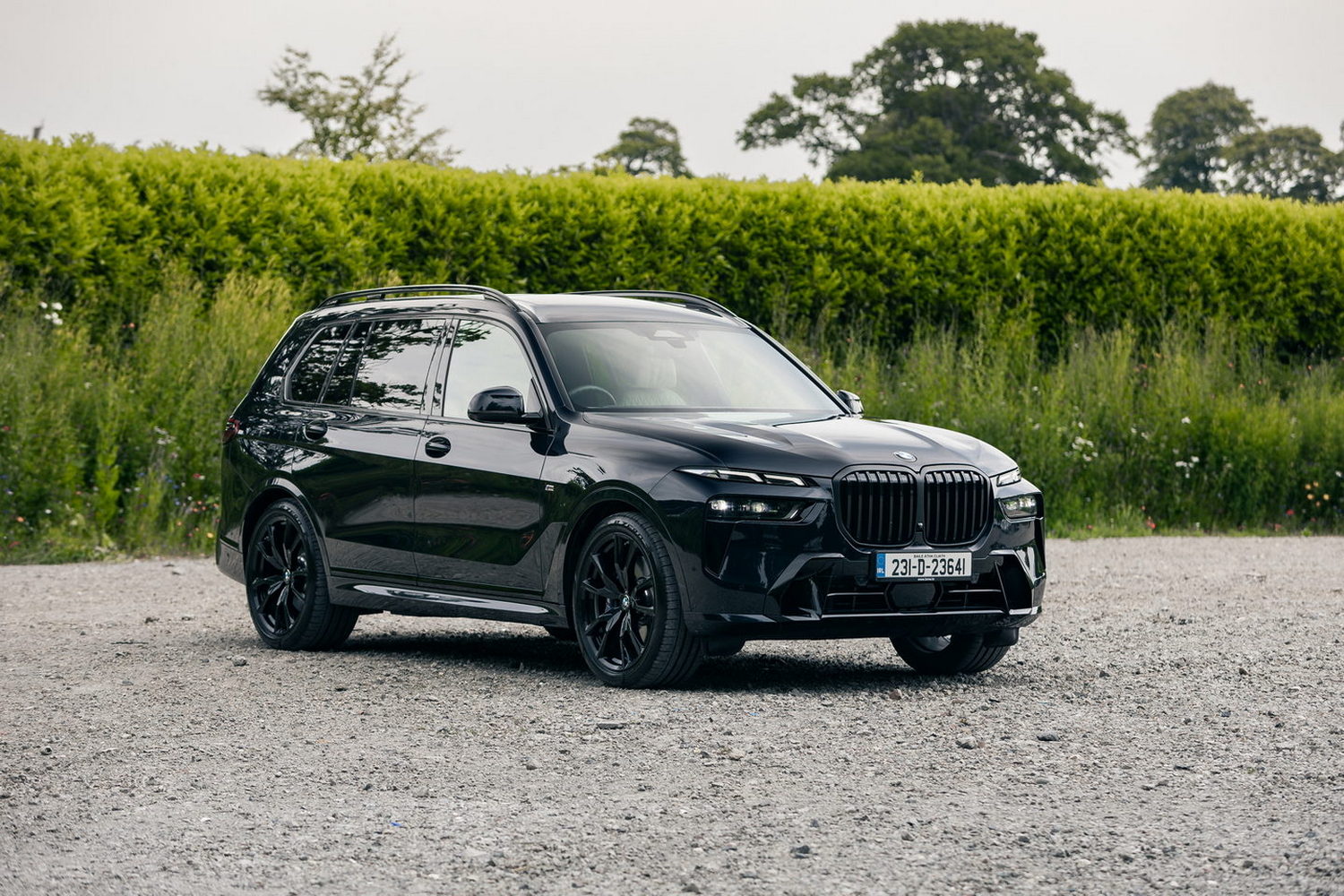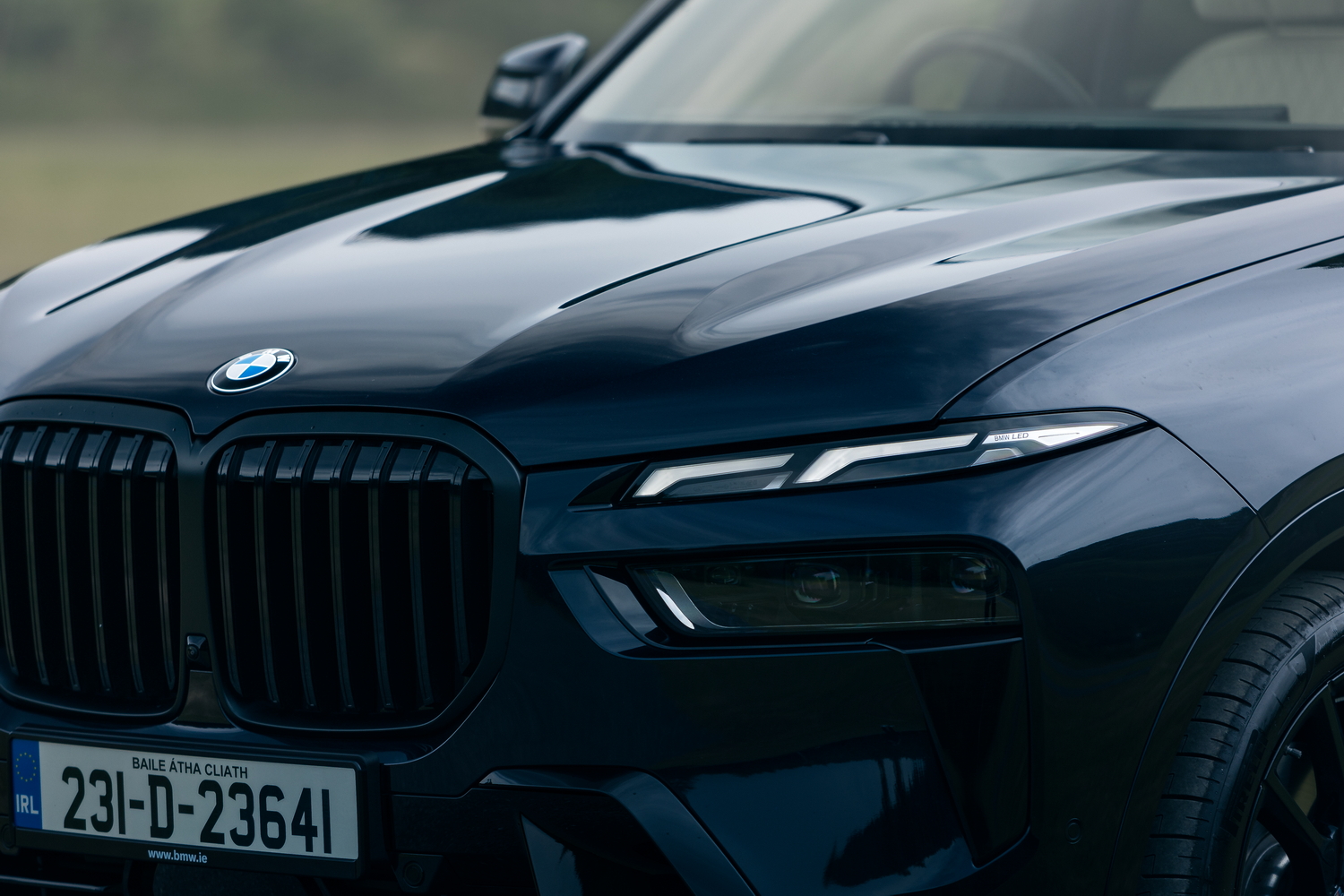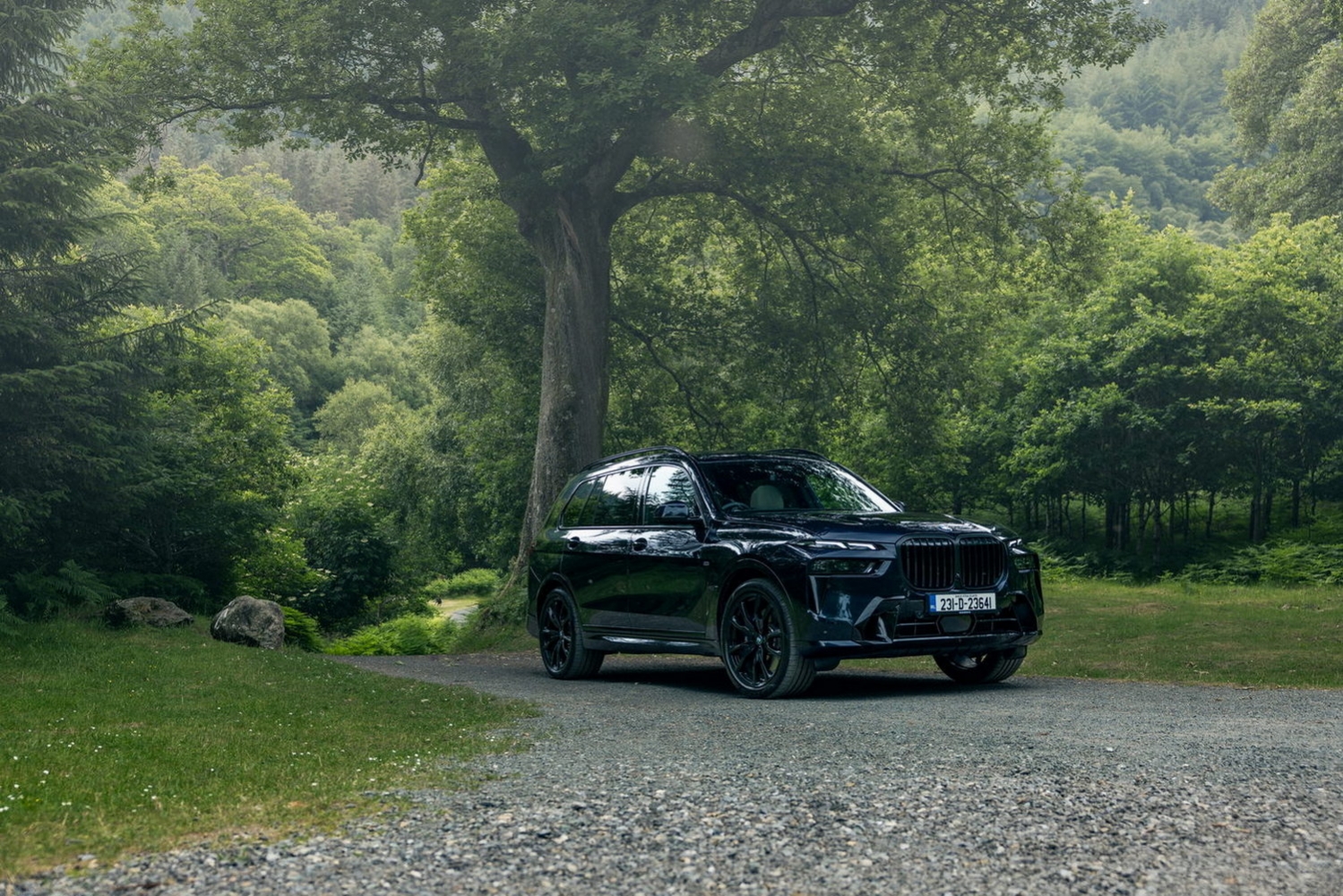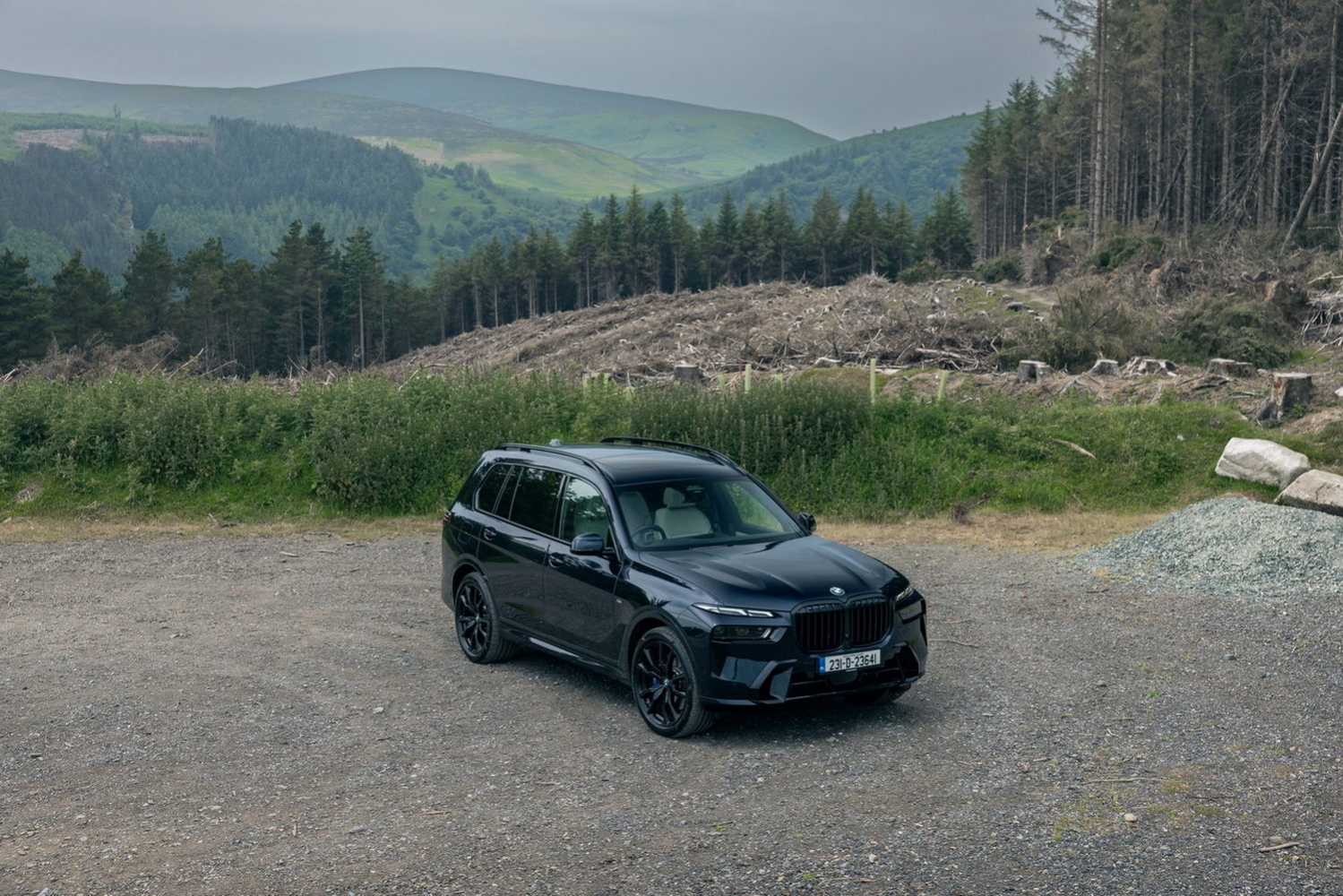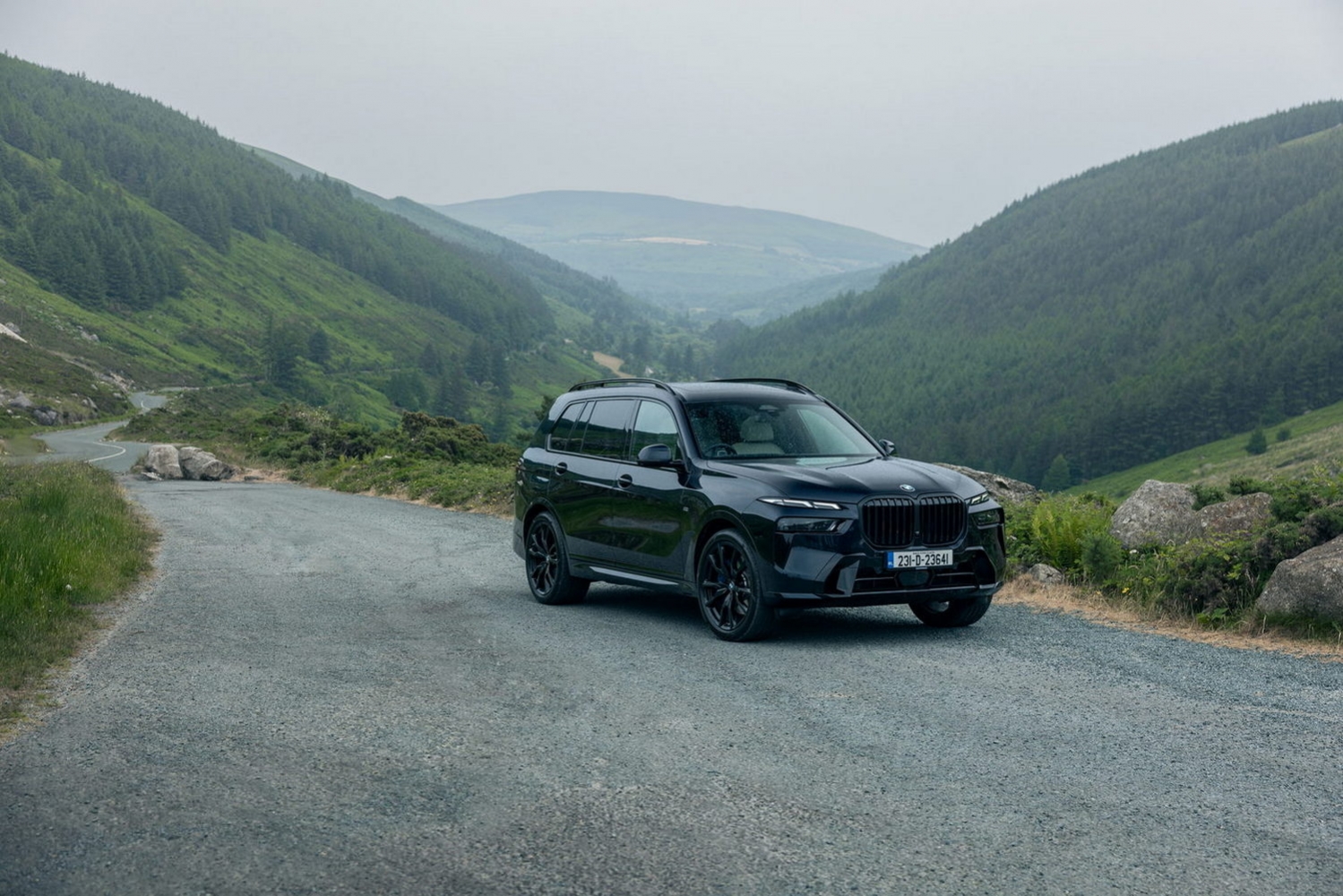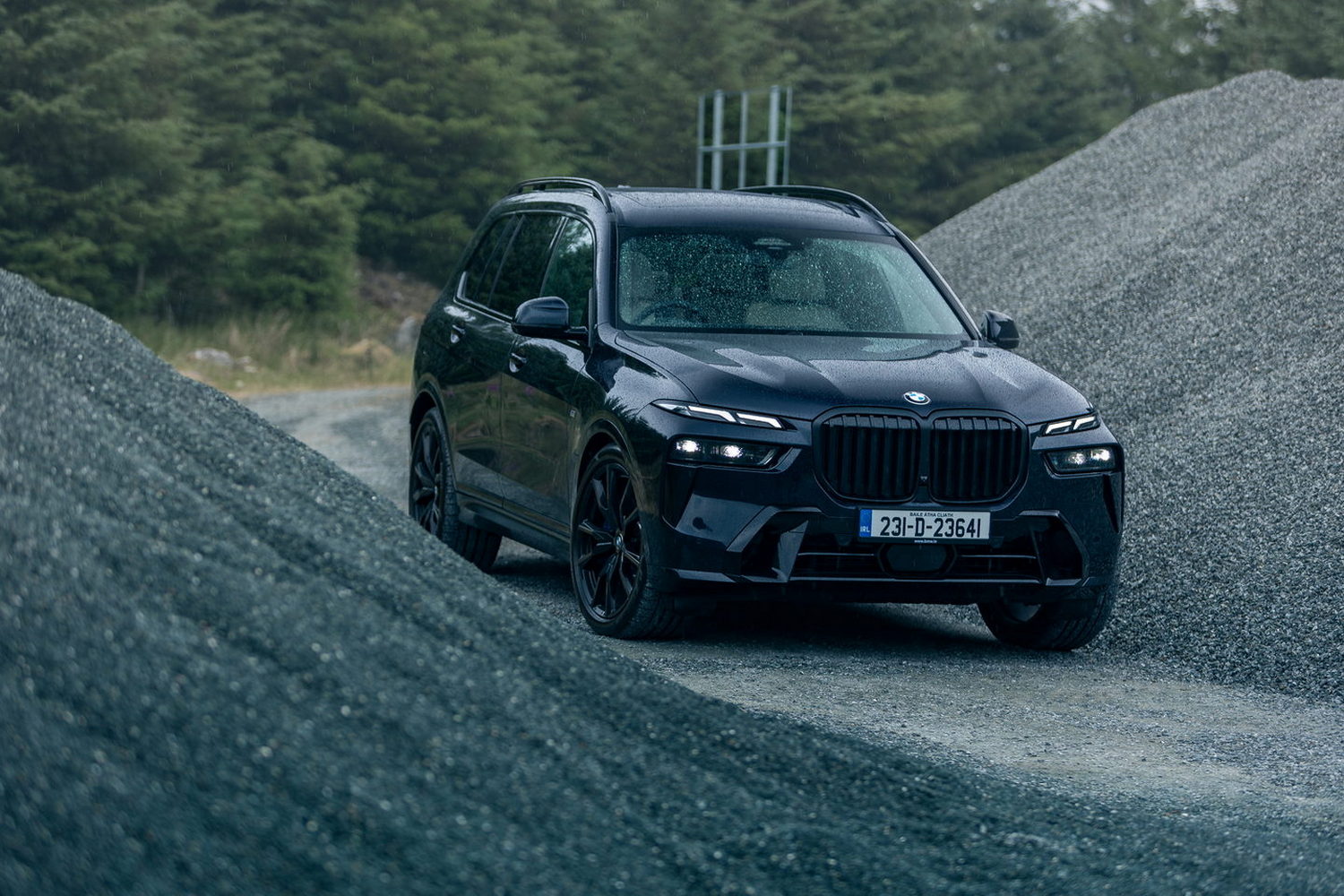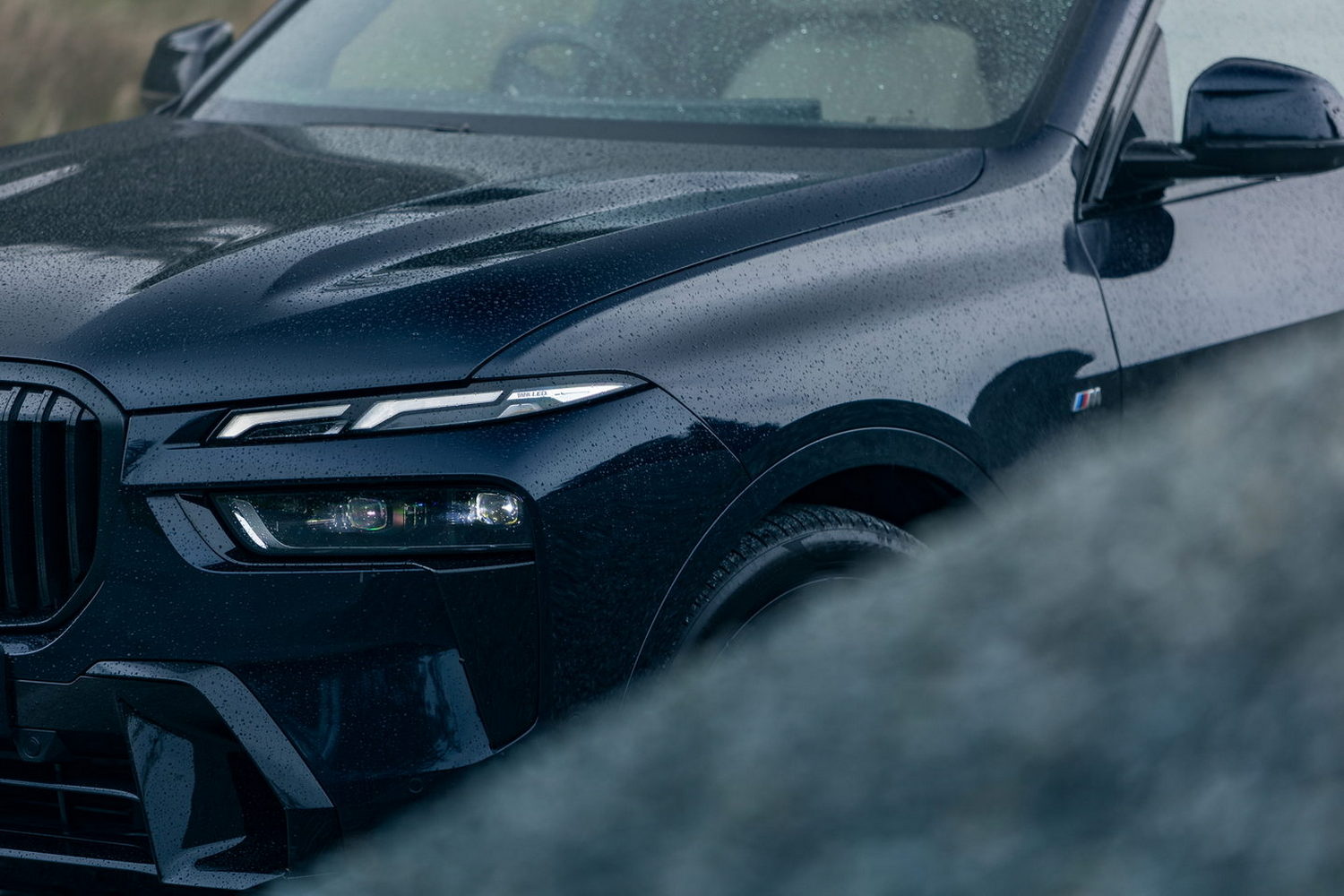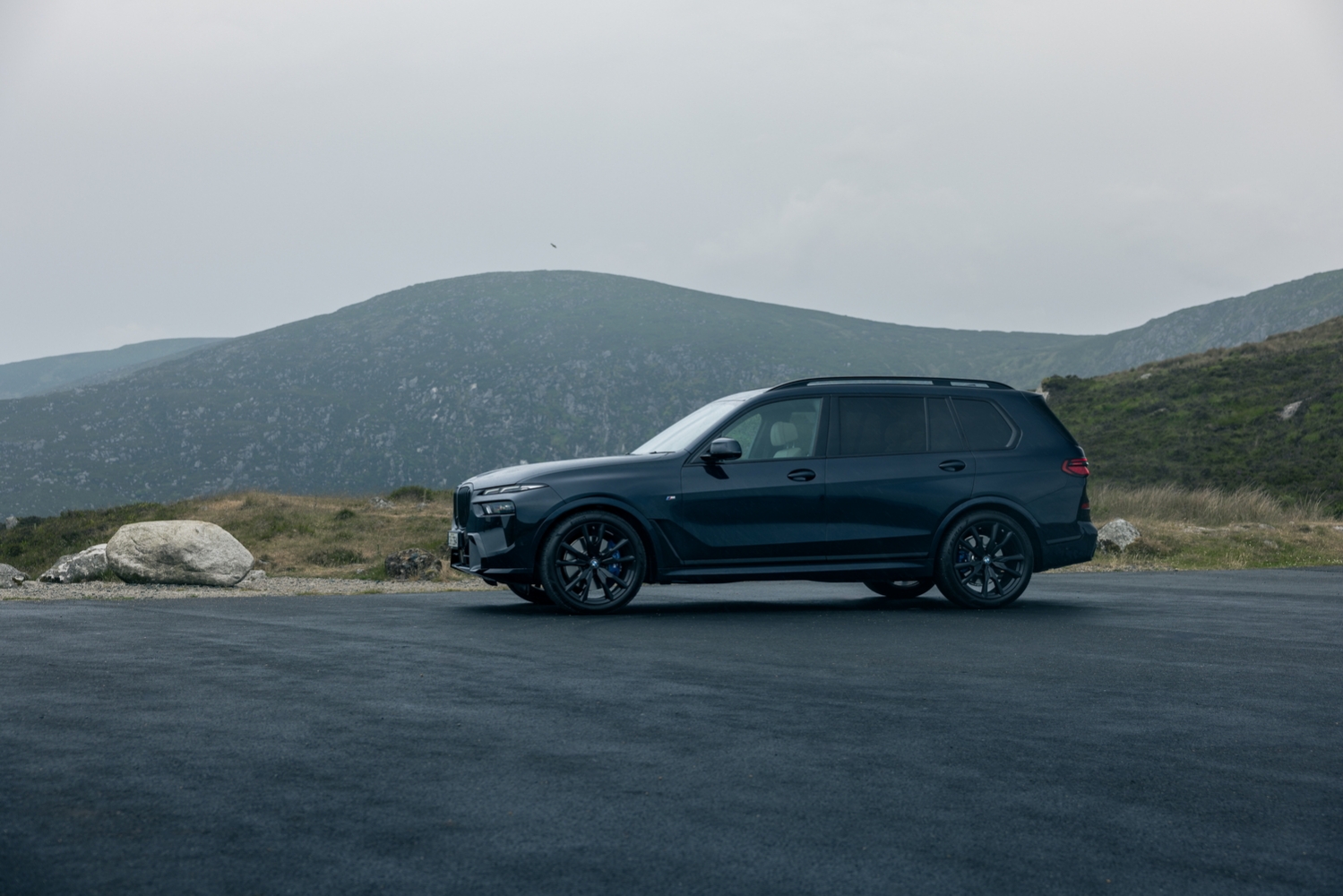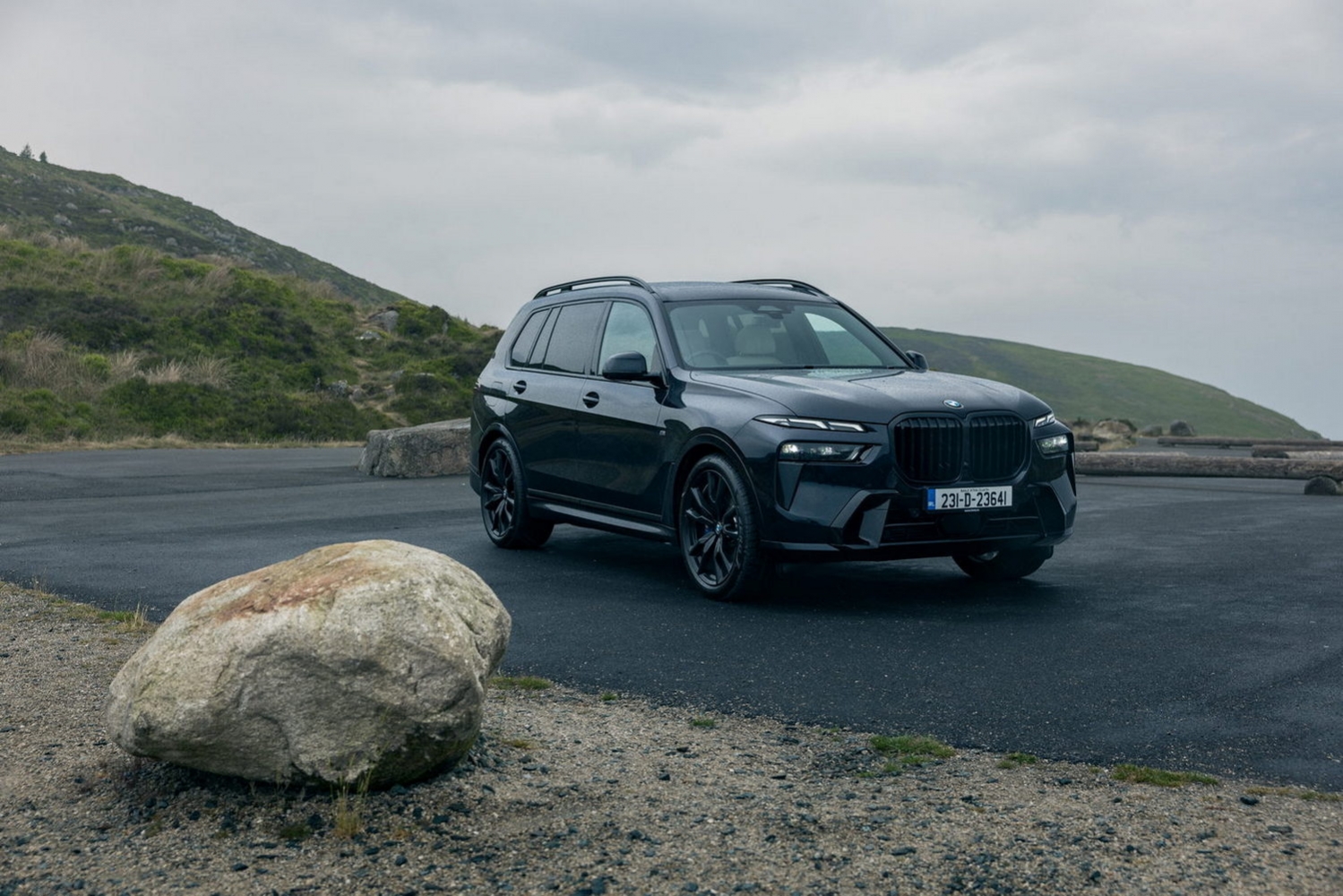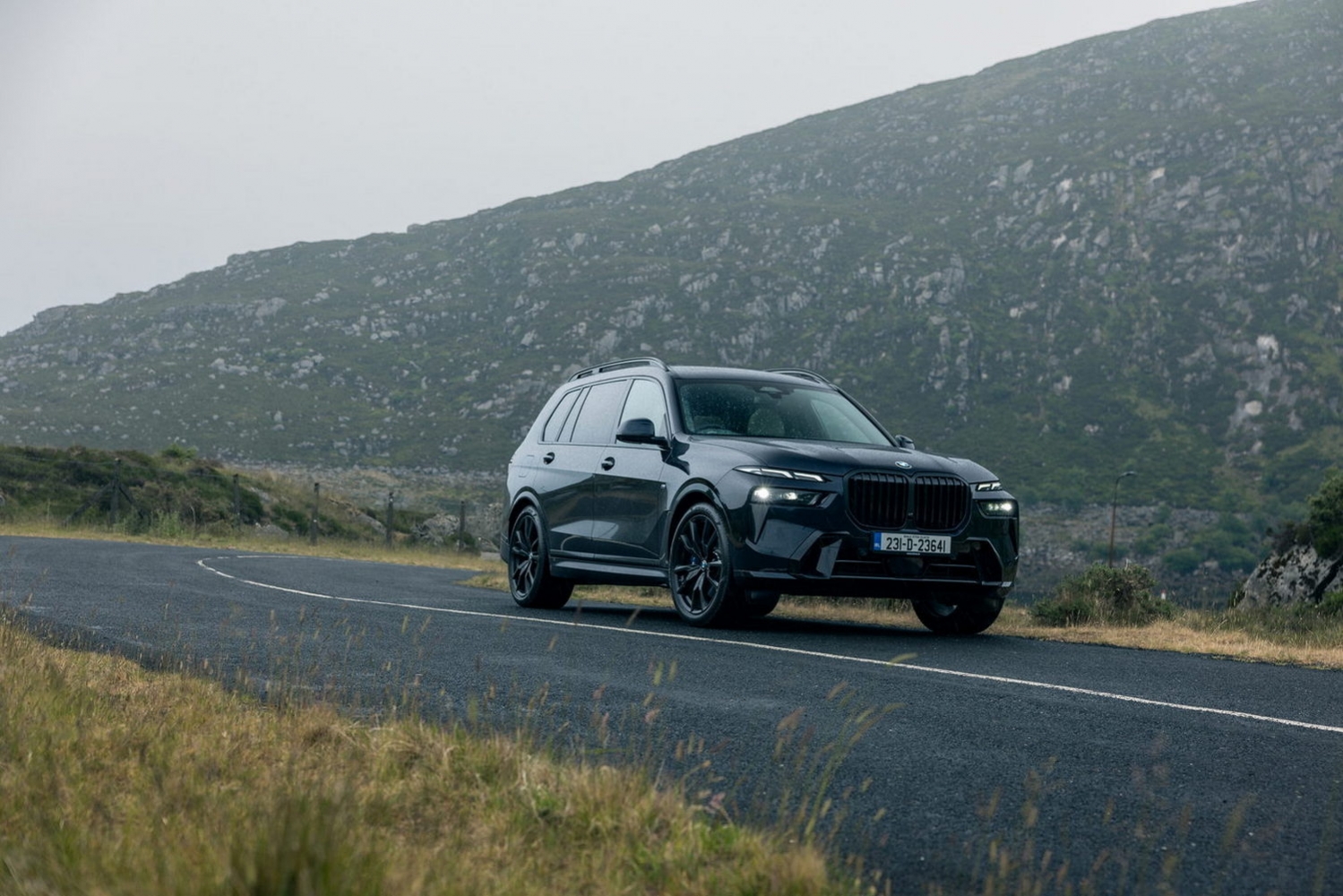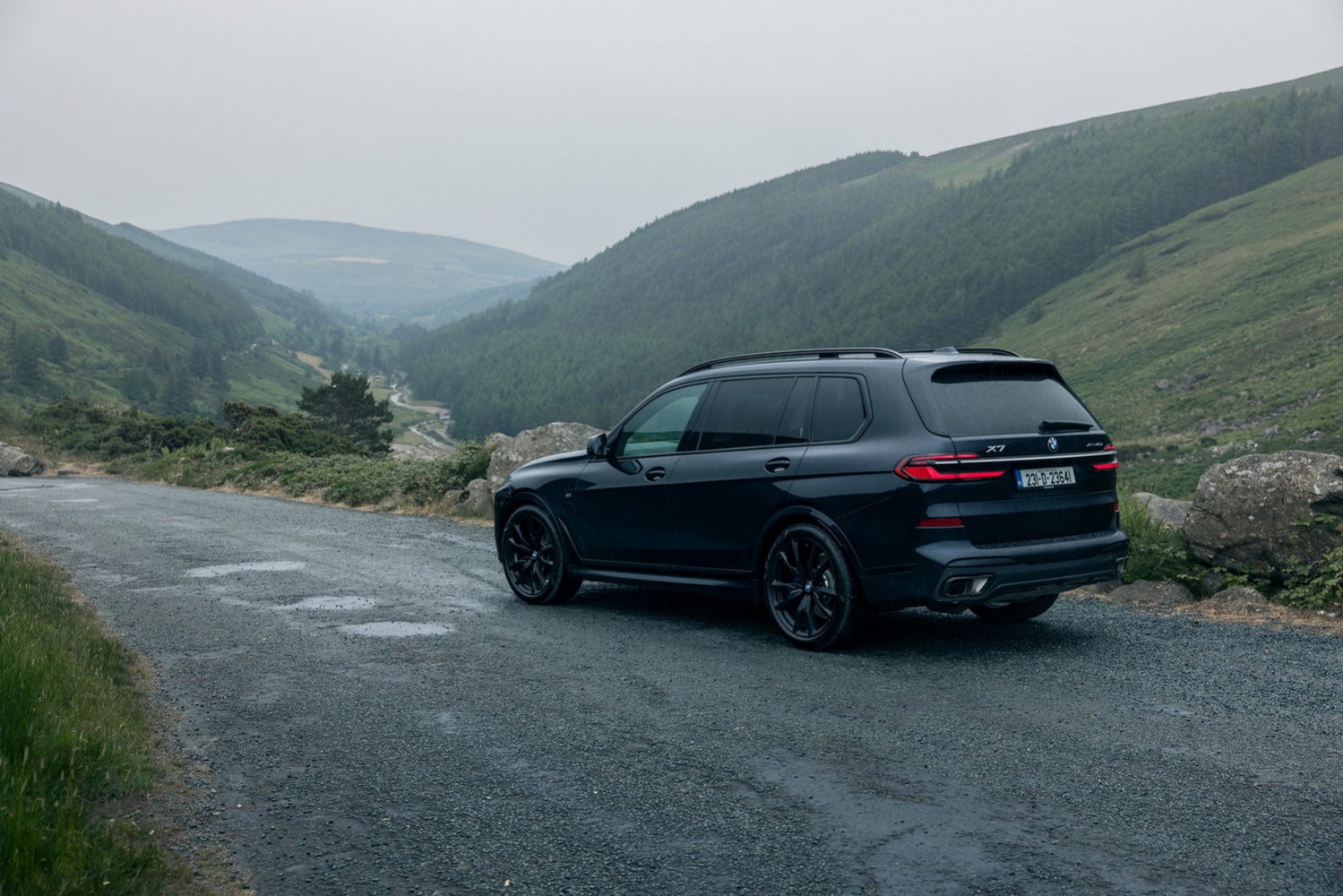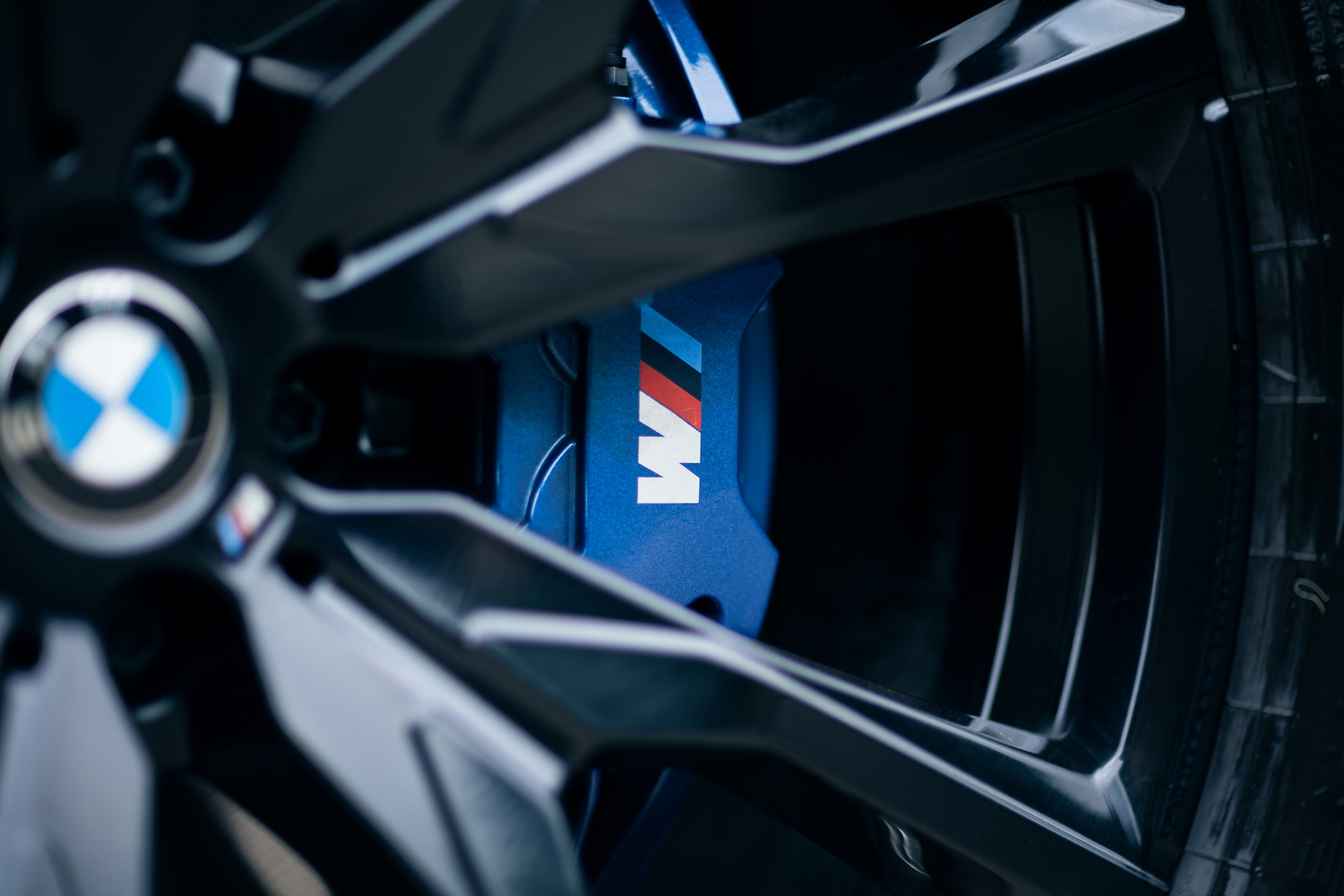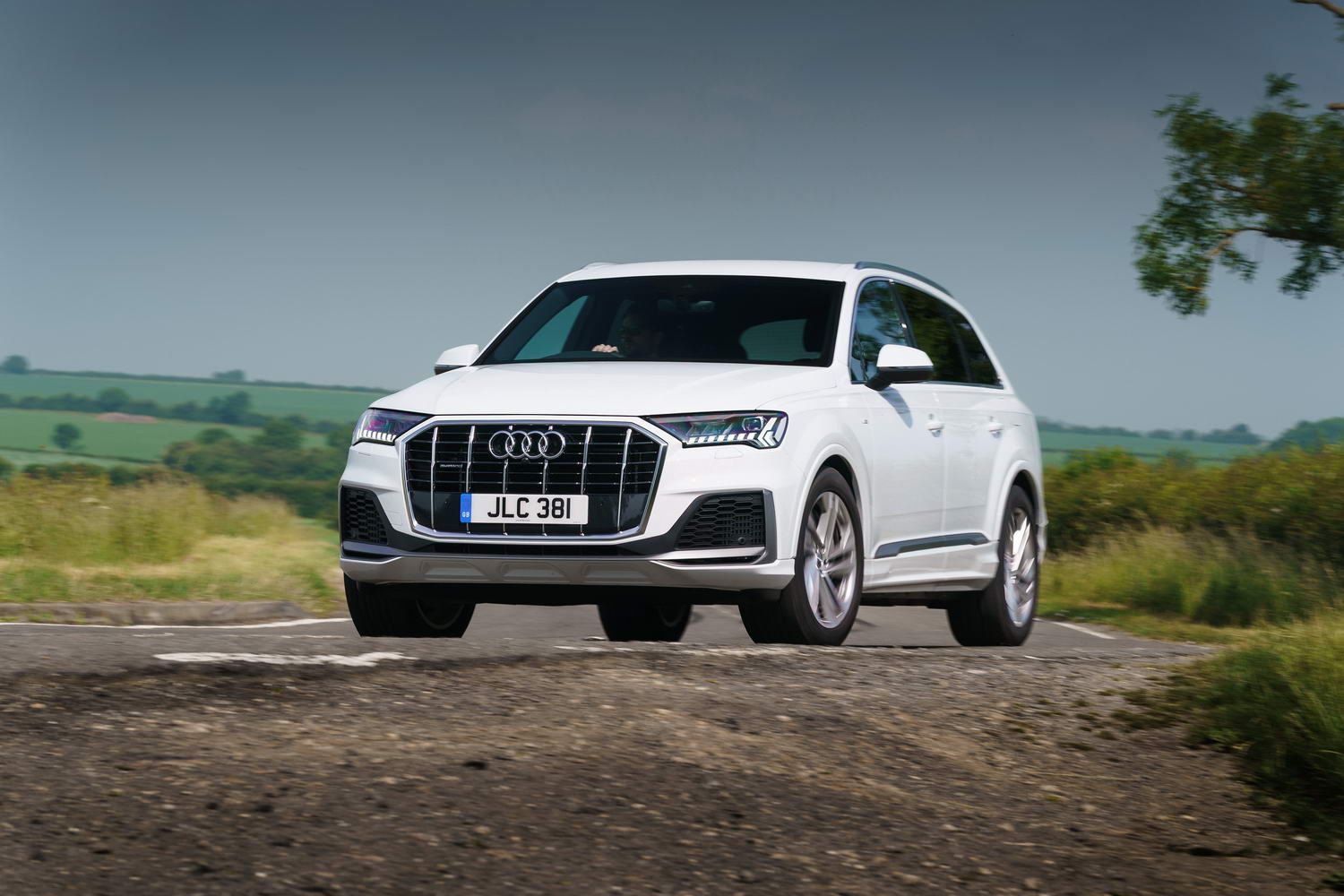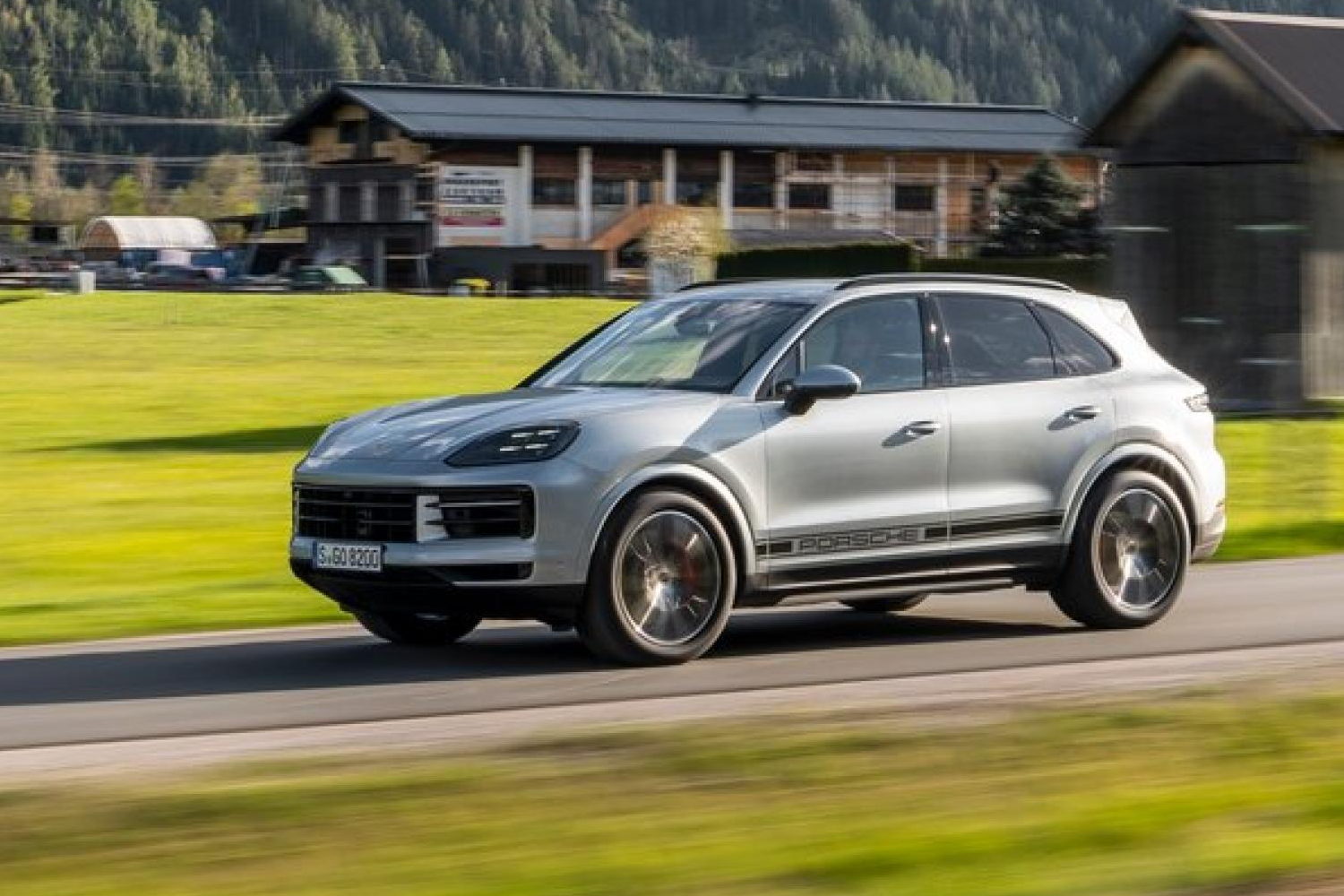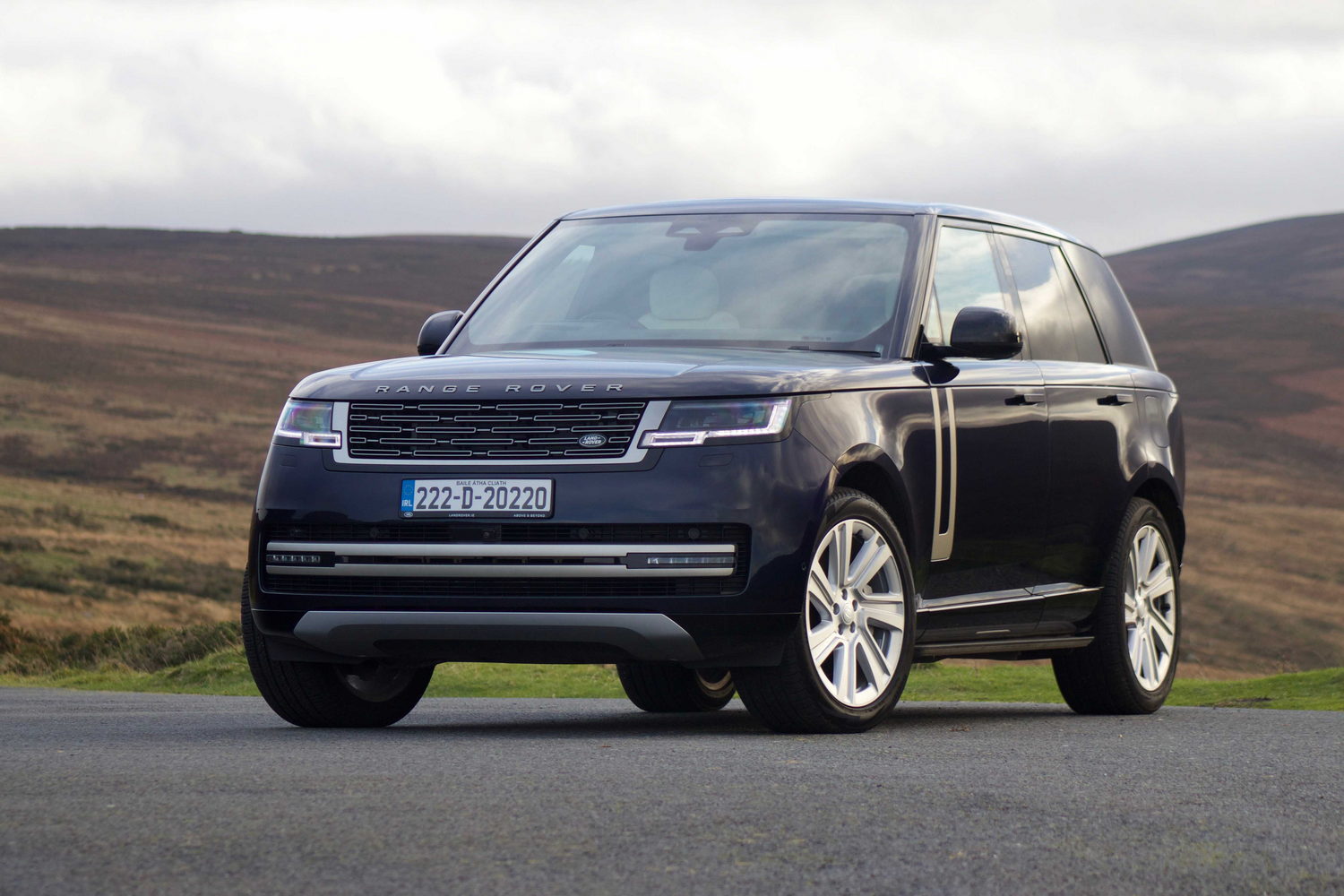BMW X7 overview
When the BMW X7 was first introduced, back in 2019, it was almost an embarrassing vehicle in which to be seen. Massive, hulkingly so, it seemed to be too big for Irish roads as the X7 has really been designed more with North American and Asian tastes in mind. BMW has helped the X7's cause with a mid-life facelift. Out goes the big, shiny grille of old and the conventional headlights which gave it something of a piggy face, and in comes split-level LED lights, lifted in style and substance from the BMW i7 electric saloon and the 7 Series. The daytime driving lights are the squinty ones up top, while the larger units lower down contain the low-beam and high-beam headlights, which use adaptive LED tech.
Is it any better? We think so. While the styling cues from the i7 are certainly controversial, and won't be to all tastes, we reckon that they make the X7 look sleeker and slimmer at the front. Down the sides and around the back, little has changed. Have the upgrades made the X7 any more relevant to the modern world? Read on...
The BMW X7 model range
The X7 line-up begins with the Excellence model. That's available in xDrive40i form (using a turbocharged straight-six petrol engine with four-wheel drive and an eight-speed automatic gearbox which is standard across the range) at a price of €157,465, or as the xDrive40d (twin-turbocharged straight-six diesel) costing €156,514. CO2 emissions for the petrol version start from a surprisingly trim 217g/km, while the diesel manages 205g/km. As standard, you get 21-inch alloy wheels, a panoramic glass roof, acoustic glazing, those adaptive LED lights, an electrically-powered split tailgate, keyless entry and start, the massive curved digital instrument and infotainment setup, 'Sensafin' synthetic leather for the seats and dashboard, heated front seats, ambient cabin lighting including a new 'interaction bar' across the dashboard, adaptive air suspension, cruise control with braking function, a Harmon/Kardon surround-sound audio system, the 'Iconic Glow' grille which lights up the front of the car at night, soft-close doors and parking assistant with reversing camera.
Next up is the hugely popular M Sport trim, which starts at €163,015 for the xDrive40i, or €162,054 for the xDrive40d. Standard spec includes bi-colour 21-inch alloy wheels, high-gloss black exterior trim, a sportier body kit, an M Sport leather steering wheel, heated and cooled cupholders, heated rear seats, a sports exhaust system, M Sport seatbelts, M Sport brakes with blue brake calipers and Alcantara roof trim.
At the top of the range is the high-performance X7 M60i (powered by a 530hp V8 no less), which costs from €199,453. That version gets 22-inch alloys as standard, as well as Merino leather trim as a no-cost option, and an M Sport rear differential.
Our M Sport spec xDrive40d test car came with a few options, including the €2,696 M Sport Pro Pack, which adds 22-inch alloy wheels and sun protection glass; the 'Sky Lounge' glass roof with its integral LED lights for €833; the 'CraftedClarity' controls (which means a crystal finish for the gear selector and a more tactile iDrive controller) for €588; a leather-covered dashboard for €833; a retracting towbar for €1,176; Piano Black cabin trim (we wouldn't bother...) for €549; and a Comfort Plus Pack, which includes rear window blinds, ventilated front seats, five-zone air conditioning and massaging front seats for €3,676.
In terms of safety, the X7 hasn't been individually tested by Euro NCAP, but the X5, which shares much of its structure and technology with the X7, has and that scored a full five-star rating, with an 89 per cent score for adult occupants, an 86 per cent score for child occupants and a creditable 75 per cent score for the protection of vulnerable road users. As part of the update for the X7, its forward-facing autonomous emergency braking system has been upgraded and now reacts to oncoming traffic and improves the safety of others by warning the driver of pedestrians and cyclists approaching the vehicle parallel to the road from the front or rear.
The BMW X7 interior
The biggest and most obvious change to the X7's interior has been the addition of the sweeping digital screen that starts behind the steering wheel and stretches half-way across the dashboard. Built into this are two screens using the latest version 8.0 of BMW's operating software - a 12.3-inch driver's instrument display and a 14.9-inch infotainment touchscreen.
This is both good and bad. It's good because it's really cutting edge, has software that can update itself over the air and has numerous online connectivity functions, including the option to use your smartphone as the car's key. Needless to say, that same smartphone can also connect to the car via the BMW app, allowing you to remotely lock and unlock it, as well as monitor how much fuel you have and so on. The navigation system has also been updated and now includes augmented reality, which overlays directional arrows on a live image of the road in front of you, taken from the forward-facing camera. This is a real boon when you're trying to find a spot in an unfamiliar town, or to use a particularly complex junction.
The bad? Well, while the systems themselves are impressive, I'm still not convinced that the graphics of the screens are up to snuff, and many of the menus and 'buttons' look a touch cartoon-ish. Land Rover does this kind of thing better, now. Equally, the main instruments can be configured individually, but they don't change all that much, which seems like a waste. Migrating all of the heating and ventilation controls to the screen is also, I feel, a mistake. While the temperature controls remain on-screen, all the time, no matter what other functions you're accessing, the main climate control menu is so over-loaded with functions that you actually have to swipe it left and right to access all of them, which seems kind of ridiculous. Equally, while the big, curved display is in itself an impressive thing, you can see that it has been added to the X7's cabin architecture rather than integrated from the start - the big plastic clamp that holds the left-hand end of the screen, easily visible from the driver's seat, is proof of that.
However, while the screen can look a touch 'plonked on', the cabin has changed more than you might think. The entire centre console is new, and now incorporates slim air vents which are controlled with neat little joysticks. There's also an interactive light bar, which isn't the gloriously tacky crystal-look ambient lighting system that you get in the i7, but rather a simpler backlit section of the dashboard that includes the X7 badge, and which changes colour according to either your preference or the driving mode.
Up top, our car came with the Sky Lounge glass roof with integrated LED lights which glow subtly at night, giving you the impression of a starry sky even when there's a traditional Irish overcast.
Down on the centre console, there are revised controls which include the gear selector (now a small tab, rather than a chunky lever as before - and fitted with an optional crystal finish in our test car), the driving mode buttons, the controls for the air suspension height and the rotary iDrive controller. Thankfully, BMW has kept a physical rotary volume knob for the very impressive Harmon/Kardon stereo, so at least that's easy to use. There's also a rather nice 3D-printer effect for the surrounds of the outer air vents, which looks a little more interesting than just another plastic panel. Overall quality levels are staggeringly good, but the X7 doesn't quite have the out-and-out luxury feel of the more expensive, if smaller, BMW XM.
Then again, the XM doesn't have this much space. In the middle row of seats of the X7, there's plenty of legroom, kneeroom and headroom for even the tallest and most demanding of rear-seat passengers. Thanks to the five-zone climate control, there are buttons for altering the cabin temperature on both sides, as well as heated seat controls. Seat comfort, especially when you use the electric controls to recline the backrest a little, is exceptionally good in the rear, but it must be said that the space on offer isn't quite as generous as you might think. You have to have the seats slid as far back as they'll go to really feel as if there's the sort of room that the X7's exterior size and price might lead you to expect.
The middle-row seats electrically tip and slide forwards so you can access row three, and while this is a handy on-touch operation, it's a bit slow compared to a simpler manual system. The third-row seats have plenty of headroom, thanks to the X7's tall, square rear styling, but restricted kneeroom, and especially room for your feet, means that they're limited in utility for anyone deep into or much past their teenage years. You can optionally have the X7 in a more luxurious six-seat layout, which takes out the middle-row bench and replaces it with a pair of club-class-style individual seats.
With all seven seats up and in use, the X7's boot space shrinks to 326 litres, but it's more useable than you might think. Fold the third-row seats down (again this is done electrically, and again it's pretty slow) and you open up a far more cavernous space of around 750 litres if you're loading to the luggage cover. Fold down all the seats and there's a massive 2,120 litres with which to play.
The tailgate is electrically operated, of course, and is actually a Range-Rover-style split tailgate. The lower portion is the smaller one, making it easier to lean in to get items at the front of the boot. Fold it down, and you not only have an easy loading lip for hoicking in heavy items (you can use buttons inside the boot to lower the rear air suspension a touch as well) but you also have a two-person seat, ideal for picnics or for outdoor sporting events.
The BMW X7 driving experience
Selling a big, heavy SUV with a big, turbodiesel engine is hardly hitting the cultural zeitgeist, especially in a summer in which wildfires and high temperatures rage across Europe. During our test drive, the weather here was wet and chilly, but then that's weather, not climate. However, while the X7, with its 2.5-tonne kerb weight and almost total lack of electric drive might make it seem like a climate criminal, once you probe a little deeper, the story becomes a little more complex.
In fact, the big inline-six-cylinder engine does get some electric assistance. It has a 48-volt mild-hybrid system with a starter/generator which can chime in with a bonus 200Nm of extra torque as and when you need it, allowing longer stop-start operation around town and engine-off 'sailing' on motorways. It also needs to be commended for incredibly fast and smooth restarts from shutdown, especially at traffic lights. No shudder, no waiting, just instant, willing power.
Lots of power, as it happens. A peak of 352hp seems like plenty, and when it's aided by a maximum 720Nm of torque, the X7 xDrive40d feels exceptionally quick for something this big. It will get to 100km/h from rest 0.3 seconds quicker than a Volkswagen Golf GTI, for instance, and the mid-range performance is exceptionally muscular.
It's also remarkably refined. Yes, there is engine noise, but it's limited to a gentle, far-off whoosh rather than anything that might be described as intrusive. For long journeys, the combo of easy-access power and quietness is just about unbeatable.
As is the touring range. On a full 80-litre tank of diesel, you can easily exceed 1,000km before you need to fill up again. While diesel has - rightly, in many ways - fallen out of fashion, it's performance like this that shows the mountain of usability that both electric cars and the national charging network still have to climb to be as useful and flexible as something like this.
You're going to be expecting a behemoth such as the X7 to be ruinous when it comes to fuel economy, but no - it's really not. We were easily able to match BMW's official 7.7 litres per 100km overall, and on some motorway runs we did even better than that, with consumption falling as low as 6.4 litres per 100km at times.
Can something this big and chunky feel like a true BMW to drive, though? Well, for the most part no, but that's because for the most part you're loafing around in either Comfort or EcoPro driving modes, with the air suspension set to soft. Do that and the X7 is truly a high-rise limo, with exceptional levels of comfort. Even the short-sharp urban bumps which so often confound air suspension systems don't seem to perturb the X7 overmuch. Serene seems to be the most appropriate word.
Now find a twisty road and select Sport mode. The X7's steering wakes up and weights up, and the suspension tautens, sacrificing bump absorption for body control. Up to a point, it really works - the X7 feels as if it has shed 150kg and can actually be quite enthusiastic as you turn into a challenging corner. Only up to a point, though, and that point is usually a metre or so before the apex of a corner when you, the X7 and the laws of physics suddenly remember that there's 2.5 tonnes to be dealt with here, in a vehicle with the centre of gravity of a tower block. Once that happens, the X7 starts to doggedly understeer, albeit not to the point where it's going to give you a fright. It's just a big, heavy SUV that can do a decent impression of a 5 Series, but only momentarily.
Our verdict on the BMW X7
The initial impression of the BMW X7 - that it's too big, too thirsty and too focused on the US market for Irish tastes - does mellow somewhat with closer inspection. While a massive, heavy SUV isn't really the kind of car any of us should be buying right now, the X7 makes a stronger case for itself than you might have thought. The space, comfort, refinement and performance you'd have expected, but that all comes with surprisingly good fuel economy too.
What do the rest of the team think?
The X7 is most definitely not my type of car, and not only because of the high price. Nonetheless, it's difficult not to be impressed by it, as Neil surmises. It's more luxury saloon on stilts than a workhorse 4x4, but its capacious interior and chunky towing capability are likely to factor into many of its buyers' decision making. And it does everything well, while even being quite enjoyable to drive. Shame the X5's excellent plug-in hybrid system isn't available, though.
Shane O' Donoghue - Editor

